Complete guide to the highlights of Nagoya Castle Honmaru Palace
English | Japanese
The Honmaru Palace was completed in 1615 and served as the residence of Tokugawa Yoshinao, the first lord of the Owari Domain, as well as the government office of the domain. Later, the Honmaru Palace became the Onari Goten, a lodging place for the shogun during his trips to Kyoto. Like the castle tower, it was destroyed in 1945, but was restored in 2018. Fortunately, many fusuma paintings and ceiling panel paintings survived the destruction, and out of the existing 1,049 panels, 1,047 have been designated as Important Cultural Properties. This article introduces the highlights of the Nagoya Castle Honmaru Palace.
※ There is an entrance fee to enter Nagoya Castle, but there is no additional cost to enter the Honmaru Palace inside Nagoya Castle.
For a comprehensive overview of the entire Nagoya Castle, please refer to 「Highlights and access methods of Nagoya Castle (Aichi Prefecture)」.
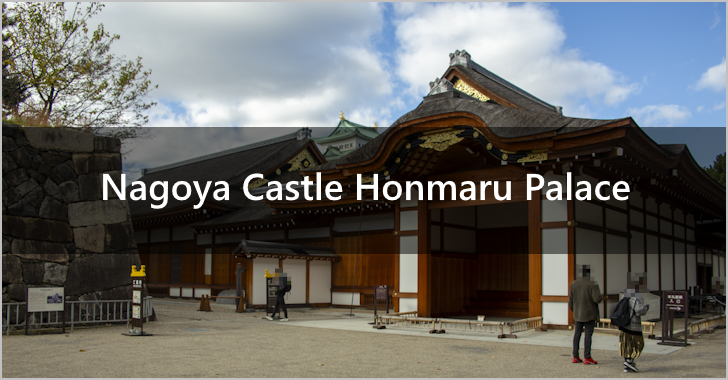
(Last modified: )
Table of contents
Two entrances to Honmaru Palace
Although Honmaru Palace is a single building, as of 2023, there are two separate entrances to the palace. The Omote Shoin and Jorakuden, among others, are accessed through the Nakanokuchibeya side entrance, while the Yudono Shoin and Kuroki Shoin are accessed through the Yudono Shoin front entrance.
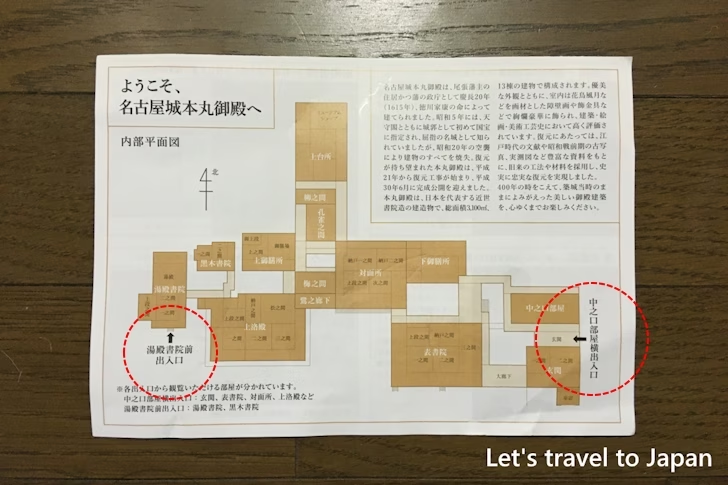
Nakanokuchibeya side entrance
If you enter through the Nakanokuchibeya side entrance, please proceed straight down the right passage towards the castle tower where the Kuruma-Yose is located. Pass by the entrance at first and proceed until you reach a white tent.
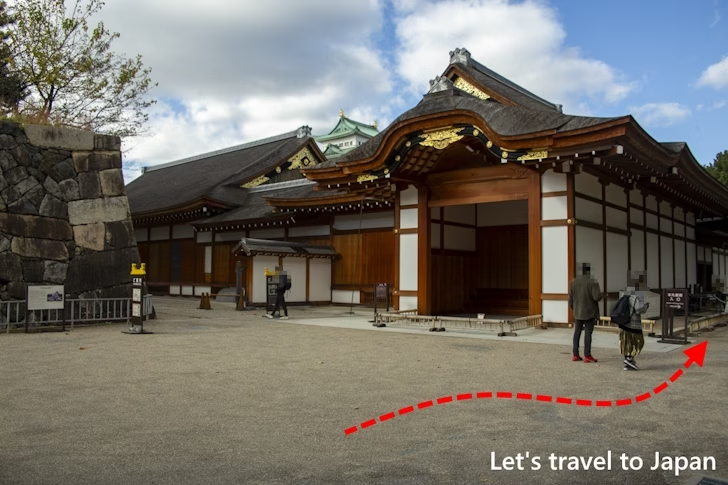
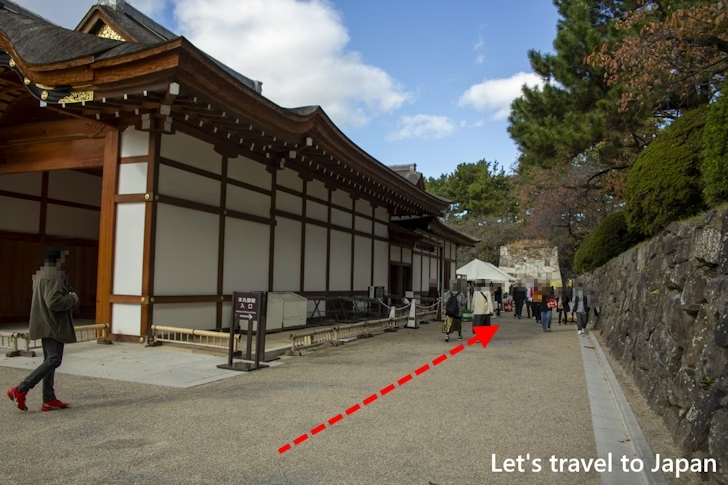
After listening to the brief instructions about visiting Honmaru Palace at the white tent, return to the entrance to enter.
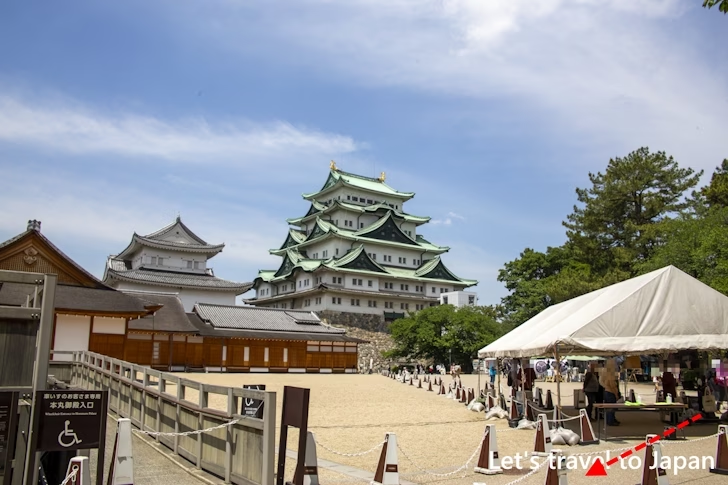
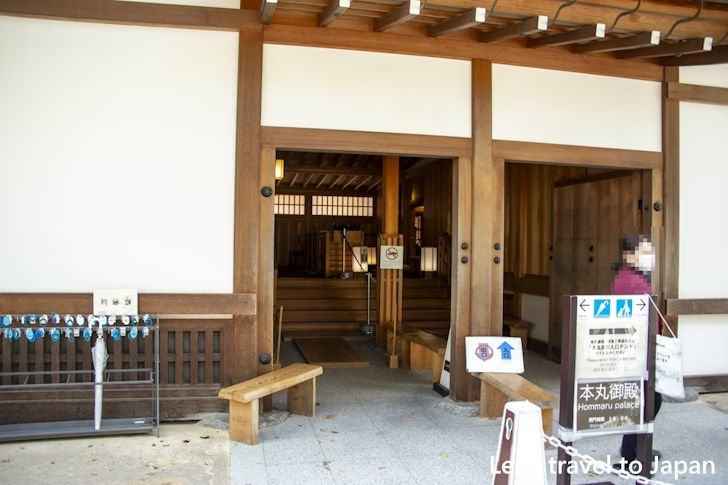
Yudono Shoin front entrance
If you enter through the Yudono Shoin front entrance, turn left at the Kuruma-Yose and then continue straight.
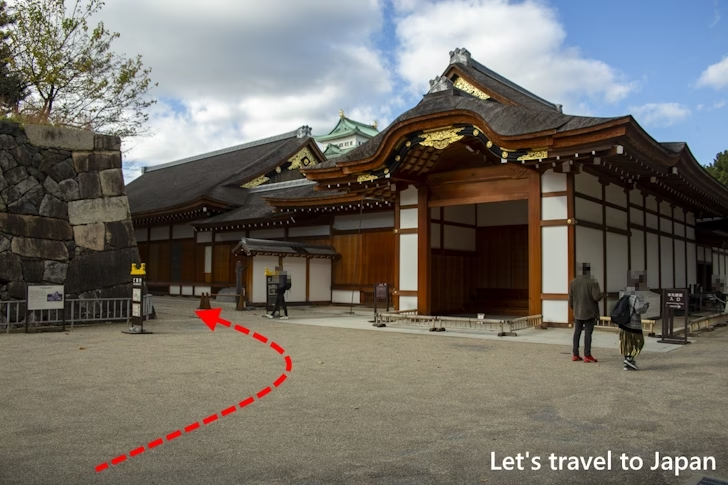
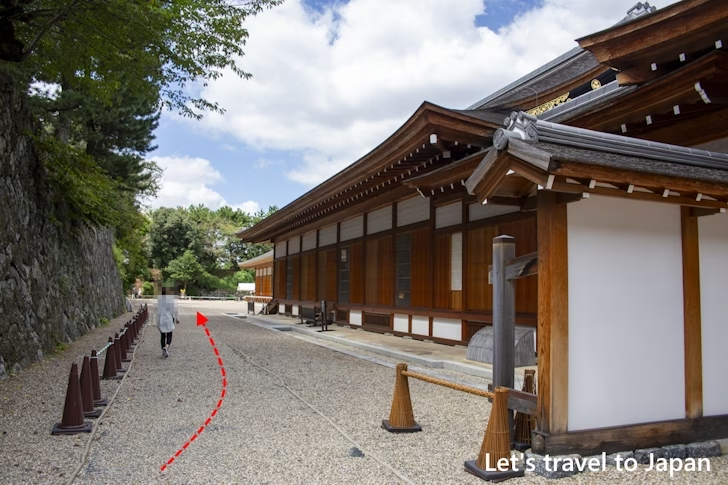
Turn right at the end of the path to find the entrance.
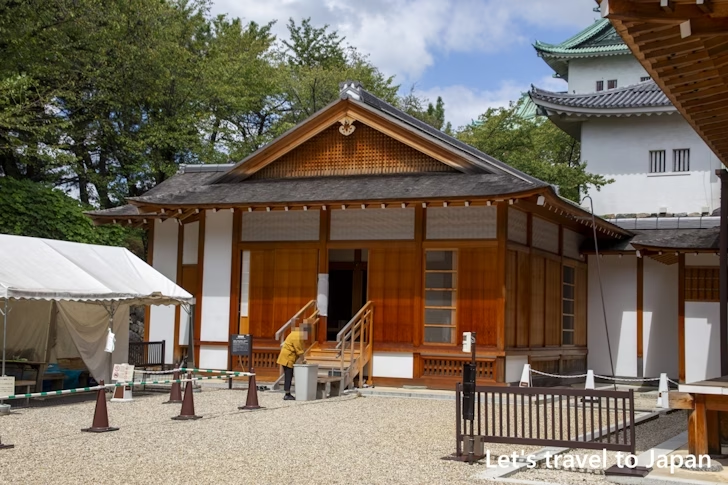
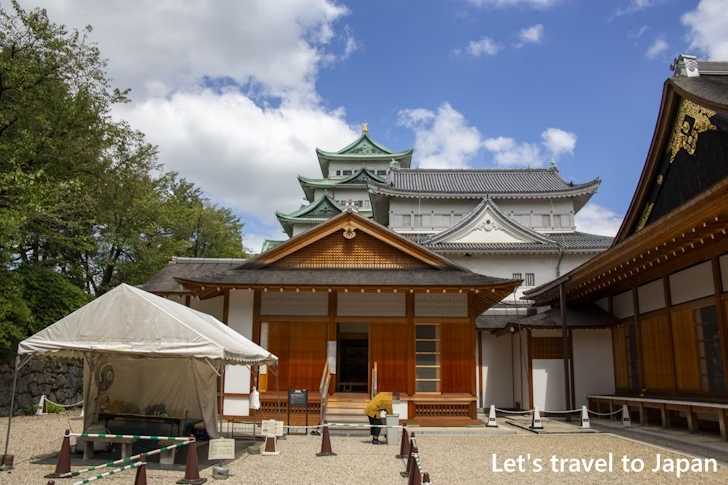
Visiting the Yudono Shoin involves accompanying a guide. You will join a group of waiting people and enter as a group. You will tour while listening to the guide's explanation. After spending some time looking around freely at the end, you will exit and switch with the next group. The time per group is about 15 minutes.
Shoes must be removed and carried in a bag. There are no lockers, but large baggage can be left at the tent at the entrance.
Nakanokuchibeya
First, let's enter through the Nakakuchi Room side entrance. The first room you enter is the Nakanokuchibeya, which served as the practical main entrance to Honmaru Palace. There are shoe boxes for storing your removed shoes and a locker room. For the preservation of the facility, those with large baggage are requested to leave their items in the locker room.
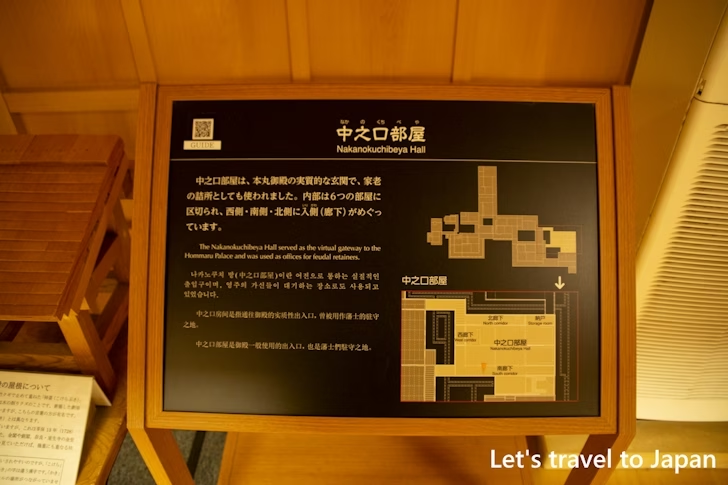
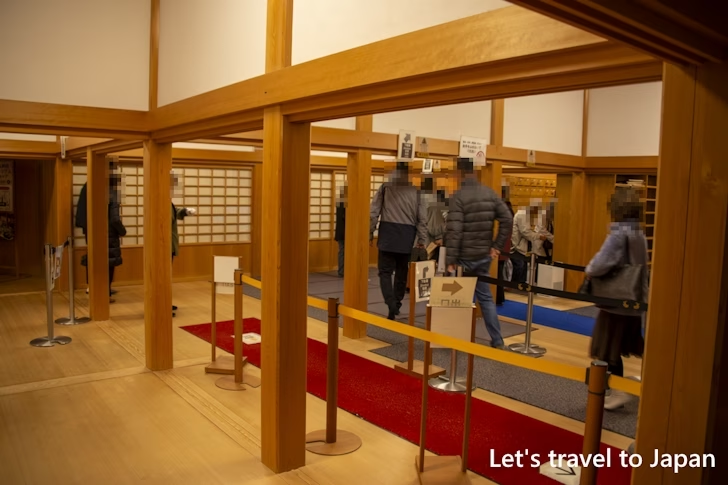
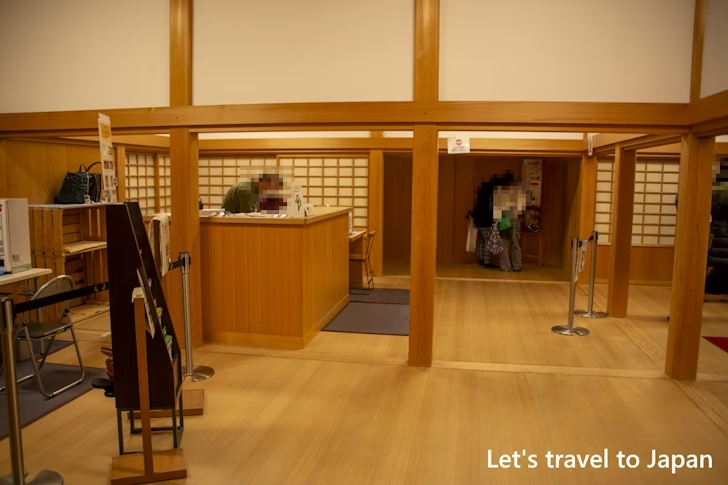
Genkan and Oroka
Proceed through the passage and on the left is the Oroka and the Genkan.
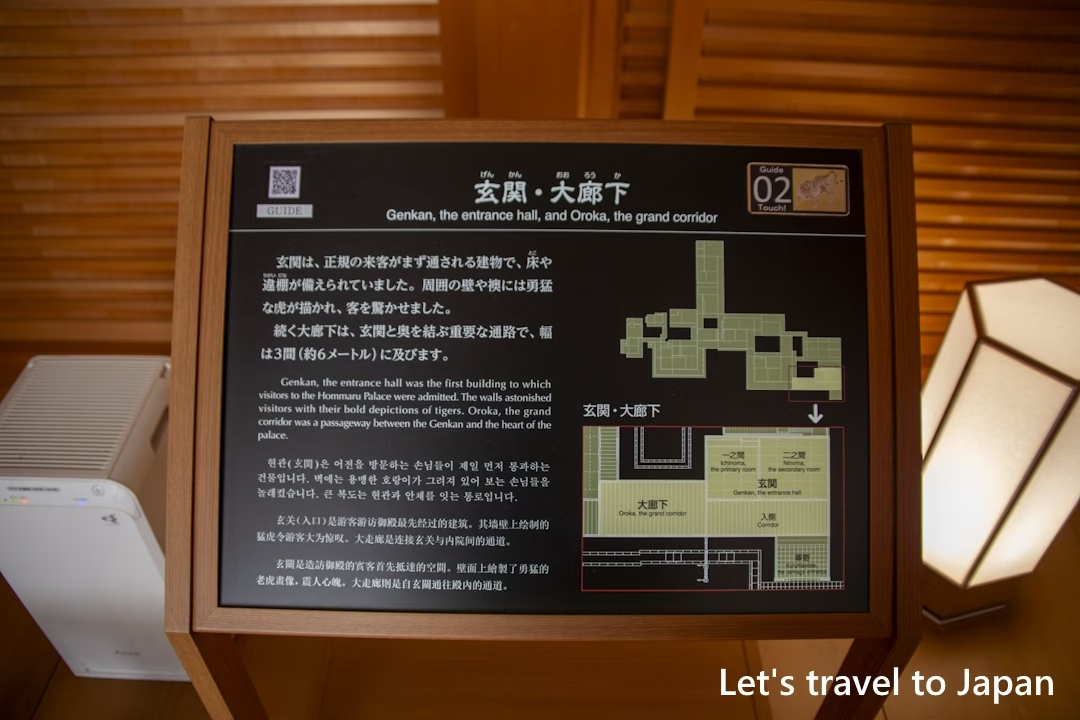
The Oroka is a hallway connecting the Genkan and the interior, approximately 6 meters wide. In the Oroka, replicas of fusuma paintings called Chikurin-Hyoko-zu are displayed. These paintings, which escaped destruction in the fire, consist of four panels and are designated as Important Cultural Properties by the national government.
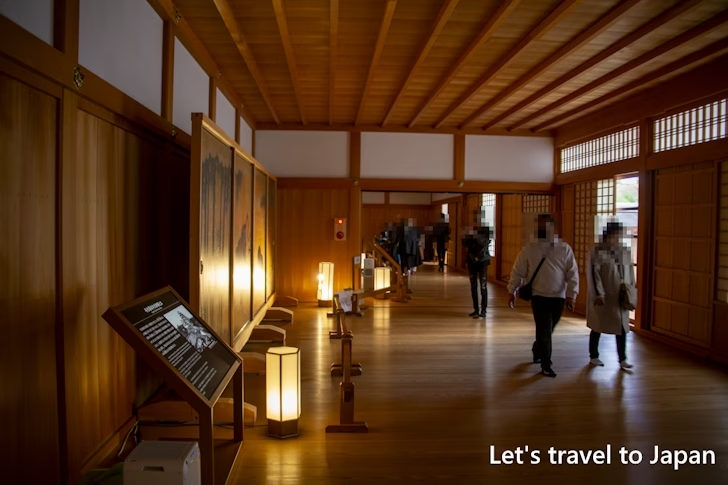
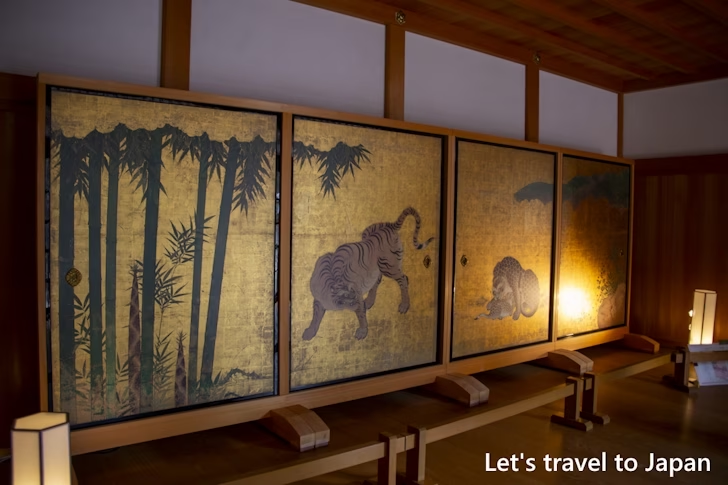
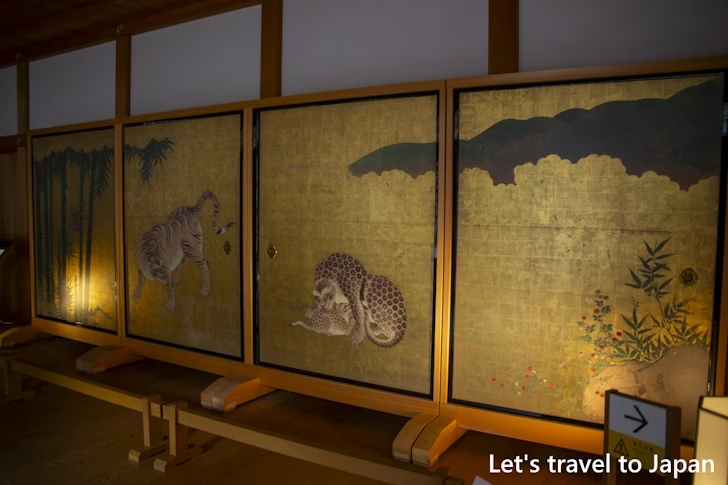
The Genkan is the first room guests are led to. It comprises two rooms: Ichi-no-ma and Ni-no-ma. Tigers are depicted on the walls and fusuma.
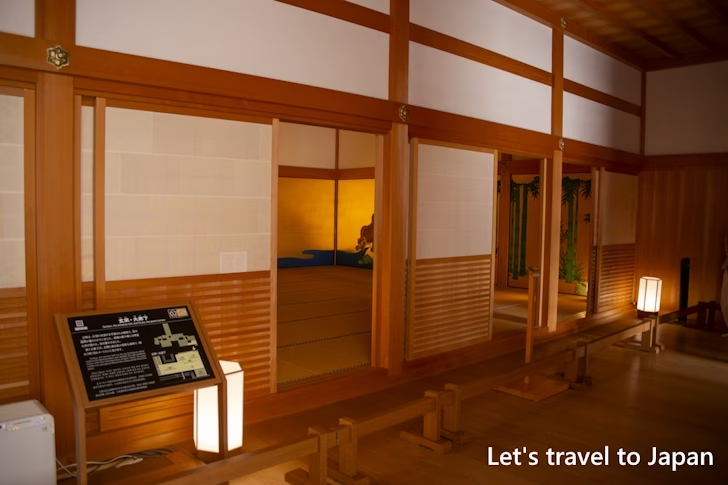
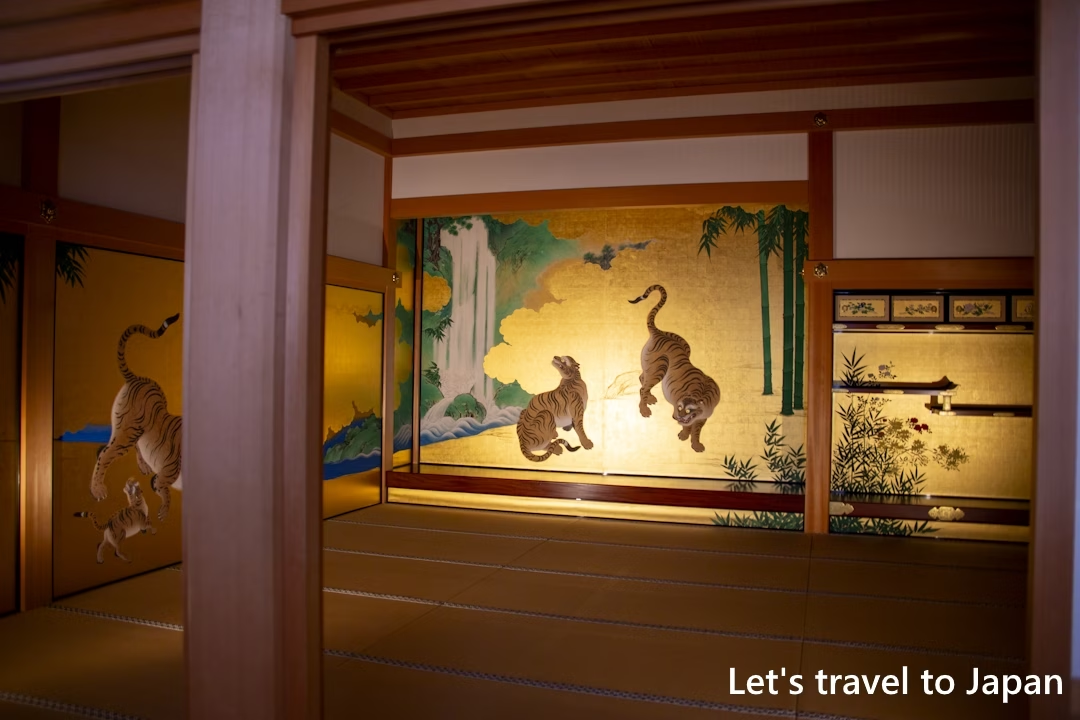
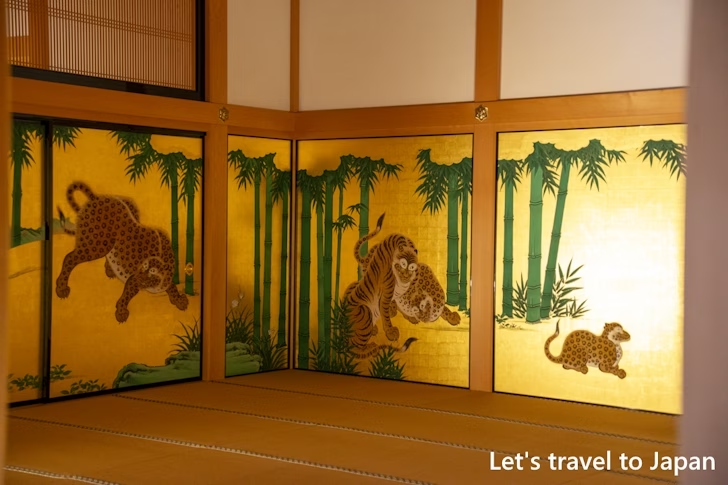
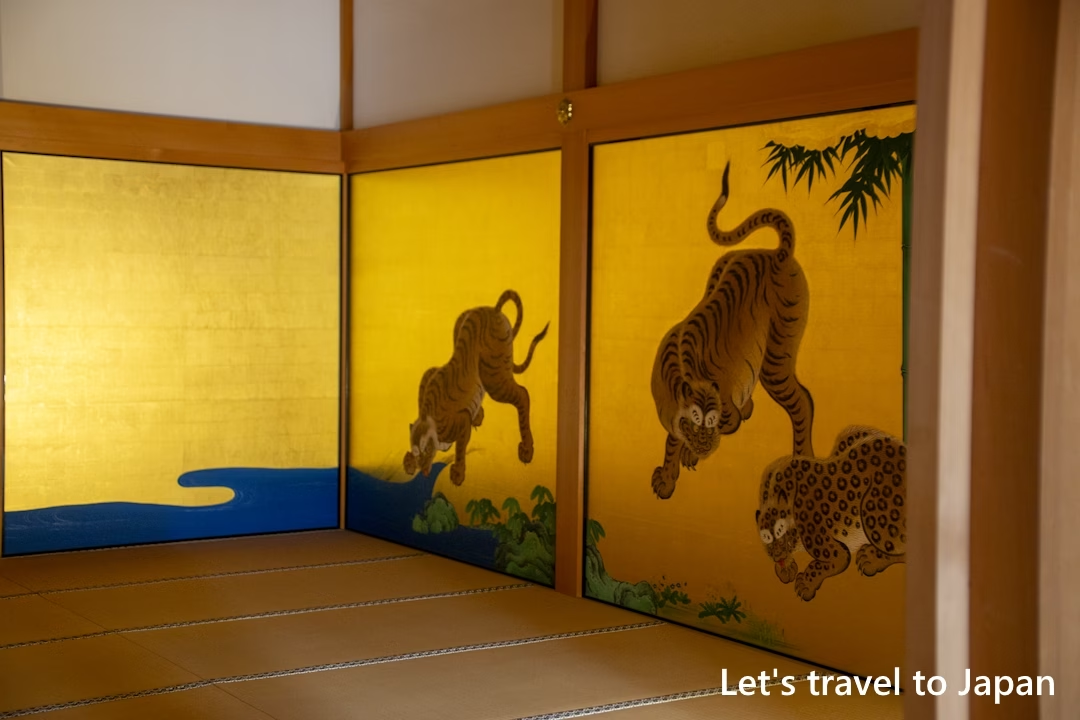
In front of the Genkan is the Kurumayose.
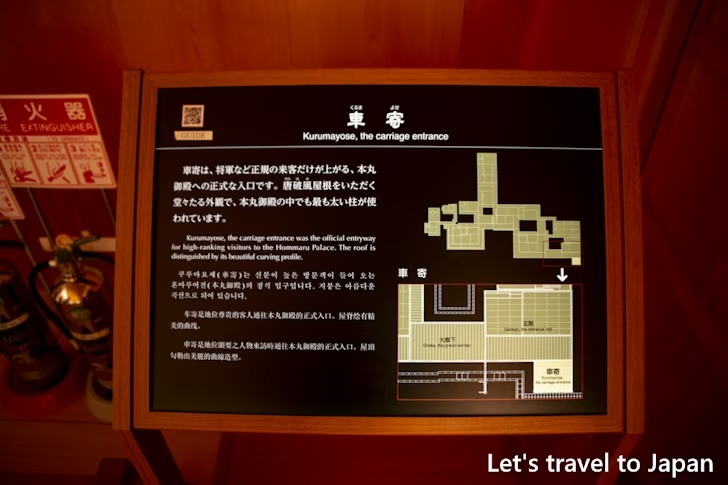
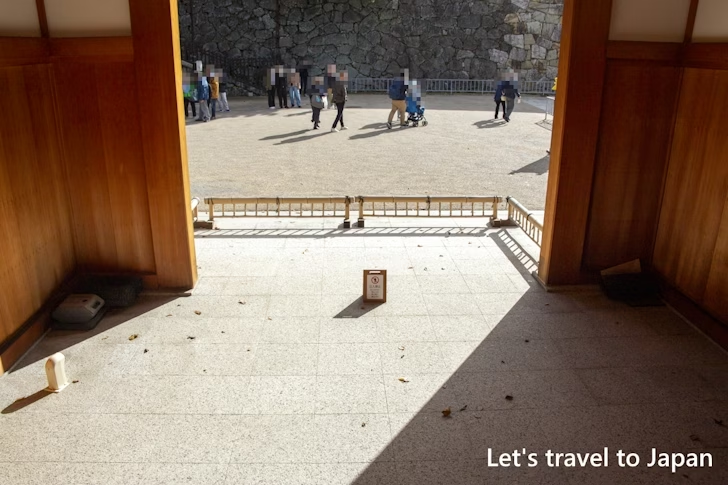
Viewed from the outside, the Kurumayose protrudes from the exterior of the building.
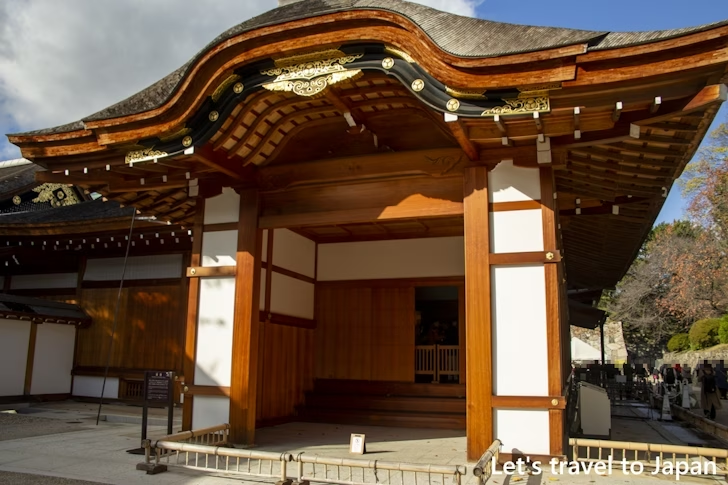
Omote Shoin
Beyond the Genkan from the entrance is the Omote Shoin. The Omote Shoin was used for official audiences between the feudal lord, guests, and retainers.
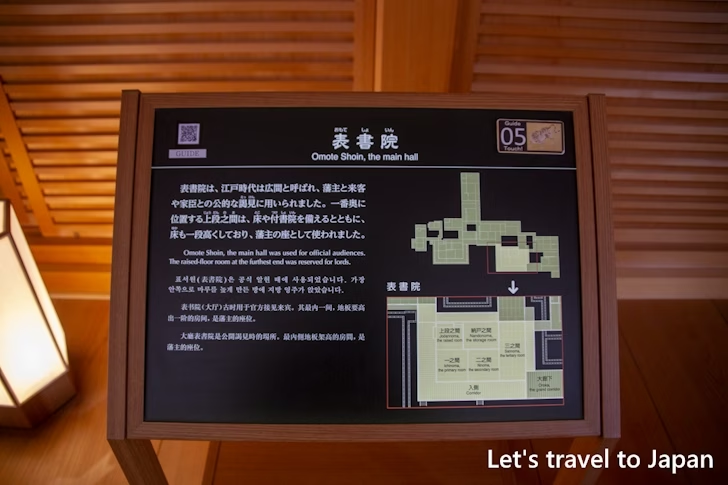
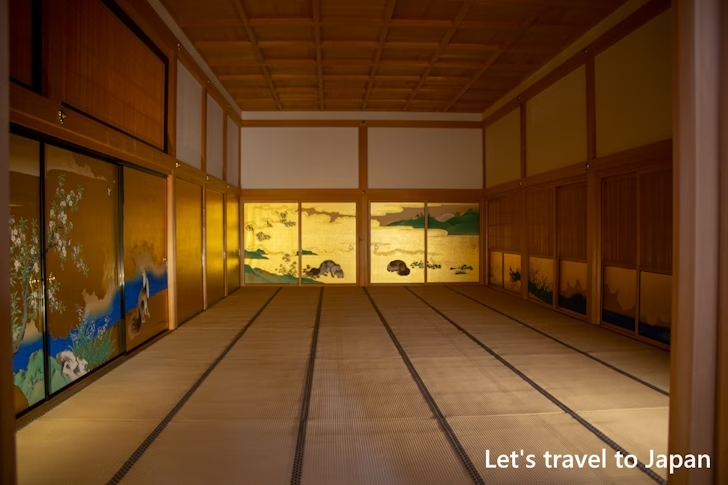
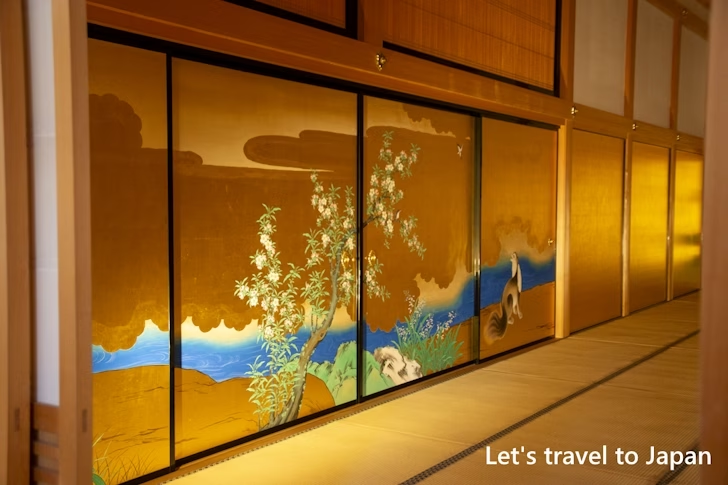
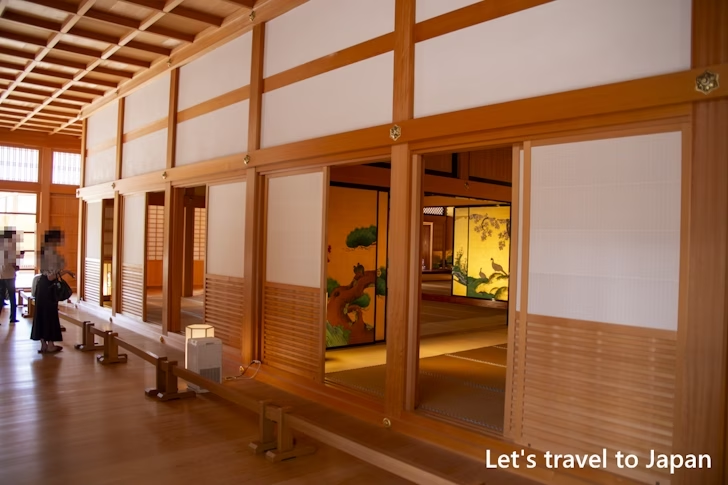
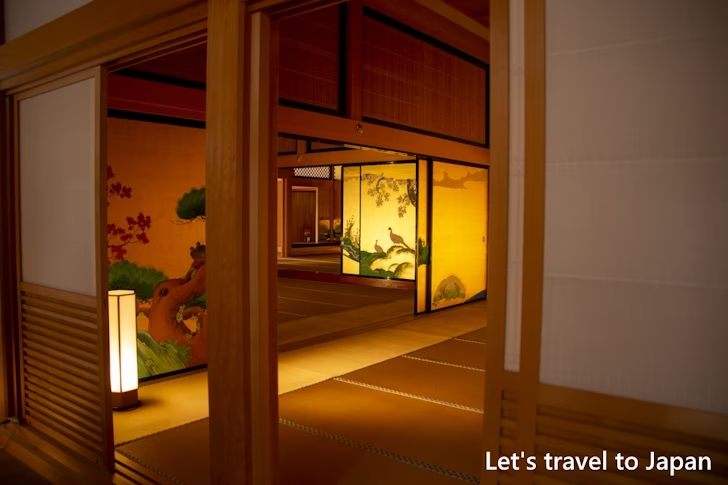
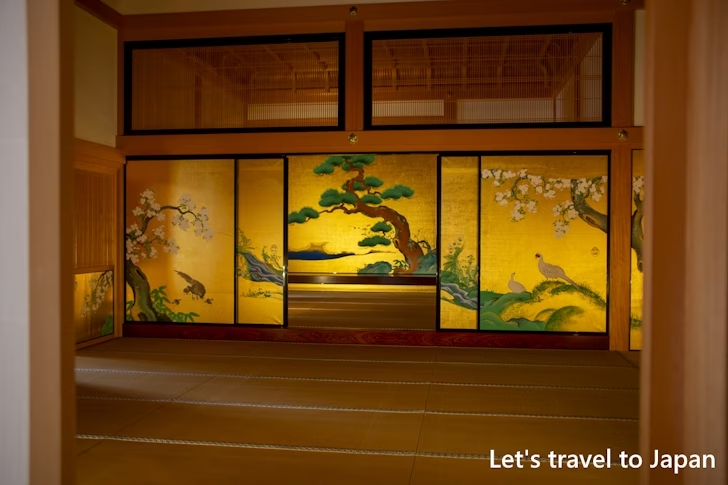
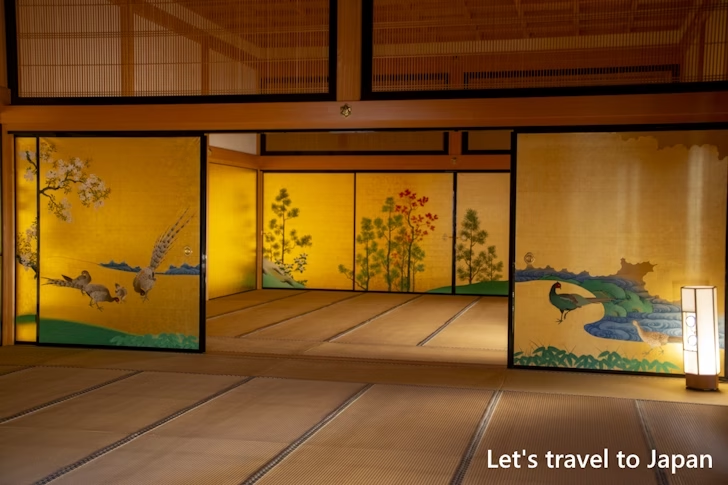
Within the room, the Jodan-no-ma was used as the lord's seat. A Tukeshoin is also part of this area.
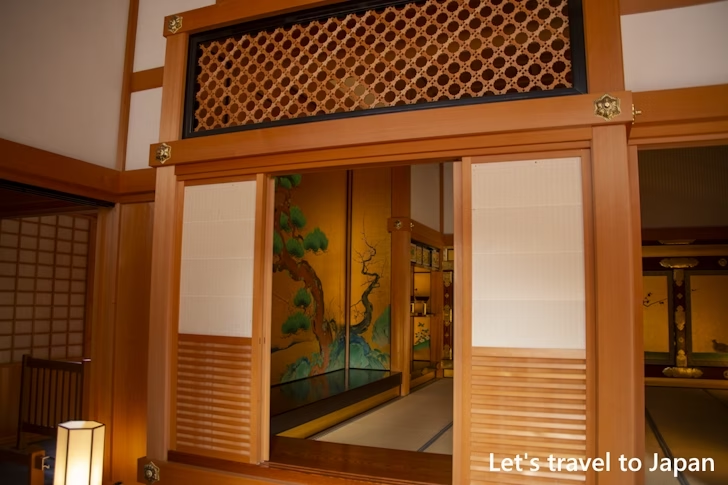
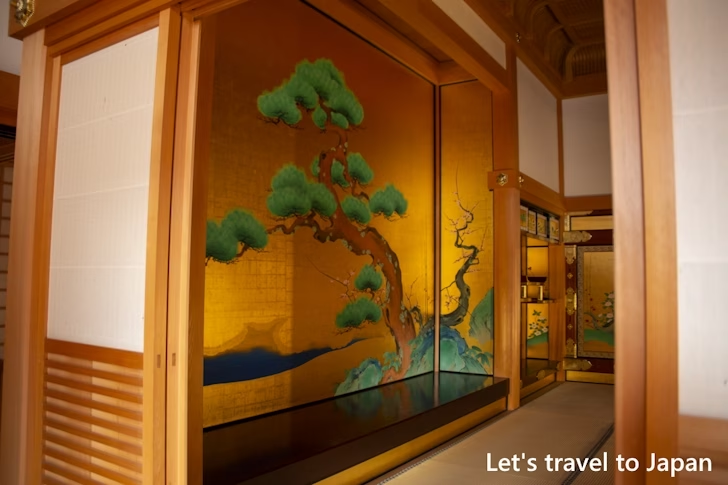
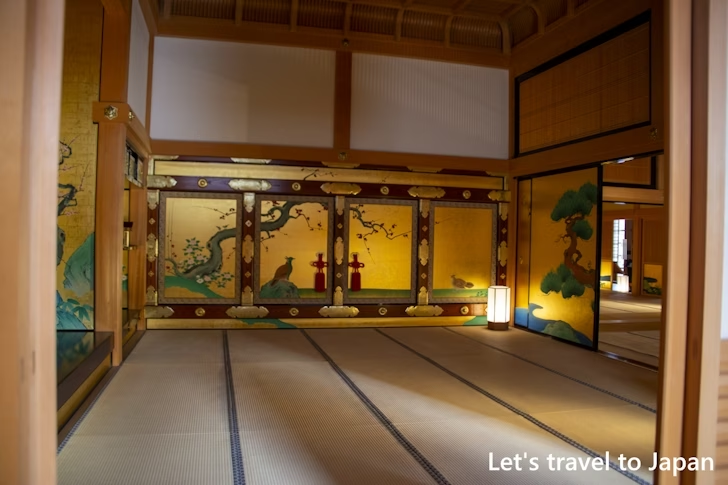
Taimenjo
Next is the Taimenjo. The Taimenjo was used for private audiences between the lord and his family or retainers, as well as for banquet settings.
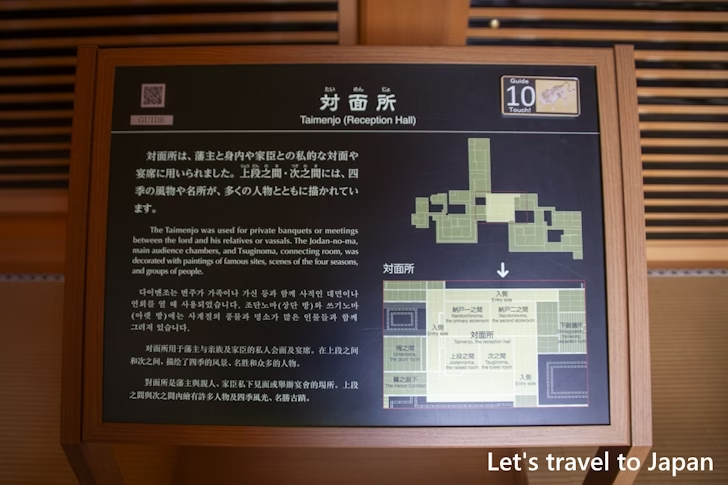
Proceeding along the route, you'll visit the Nando Ichi-no-ma and Nando Ni-no-ma.
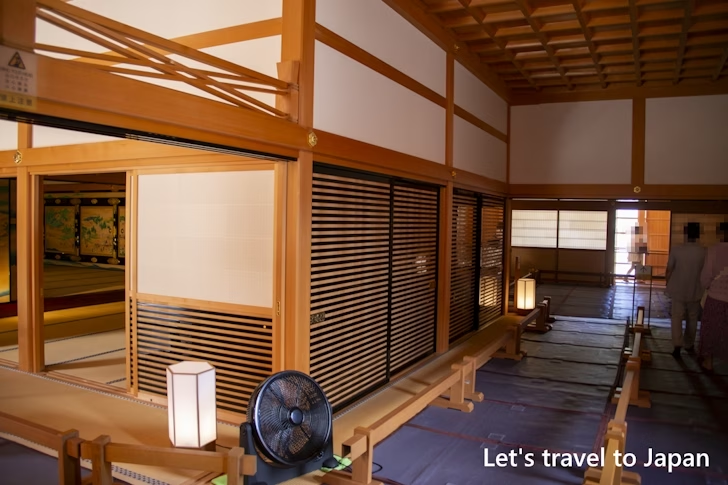
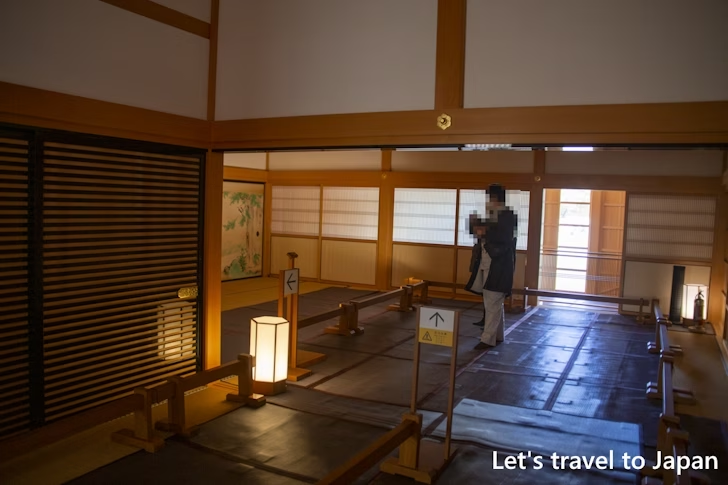
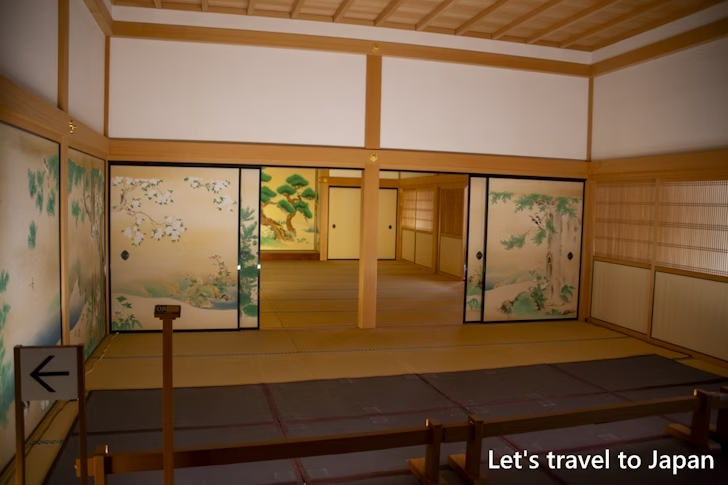
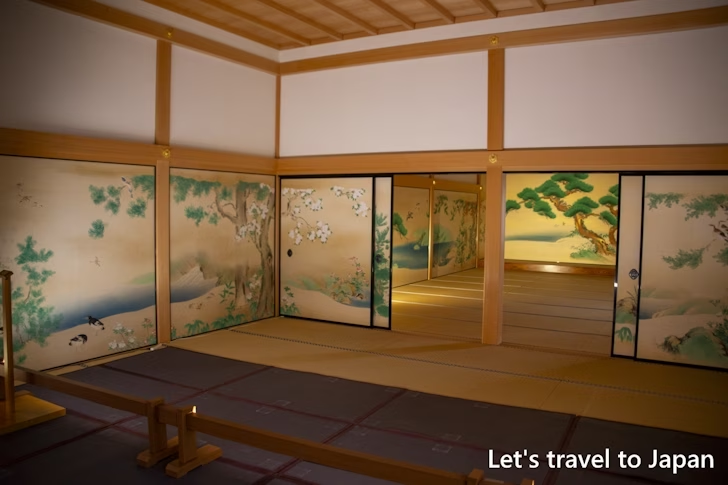
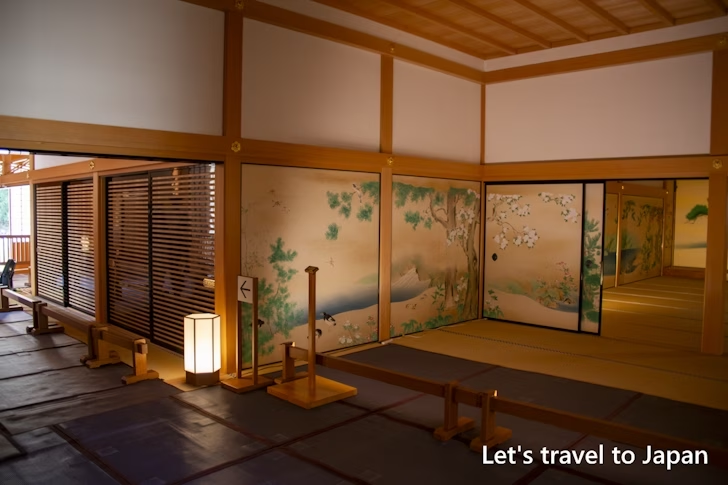
Next are the Tsugi-no-ma and the Jodan-no-ma.
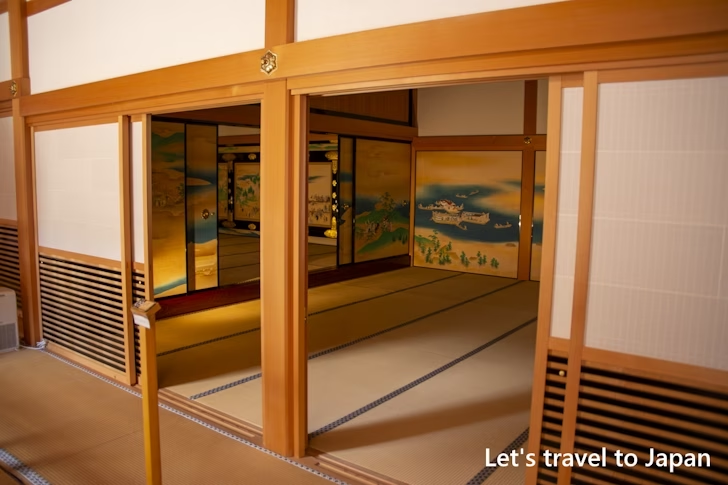
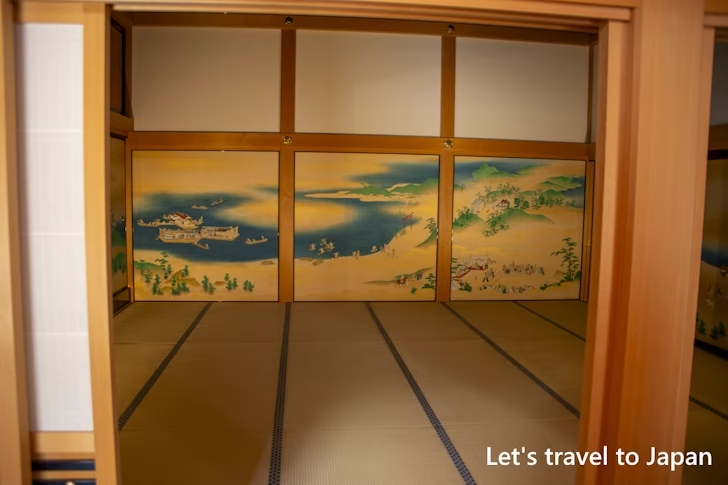
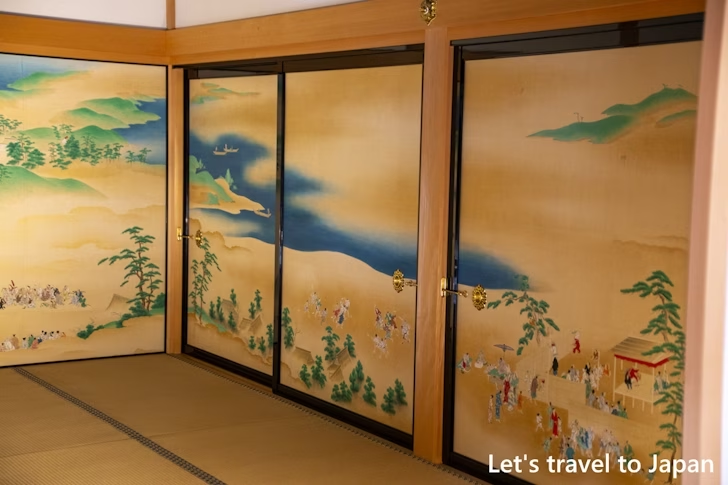
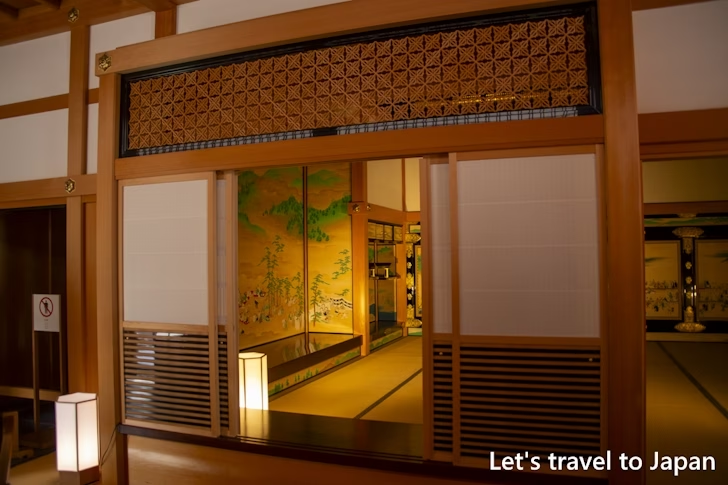
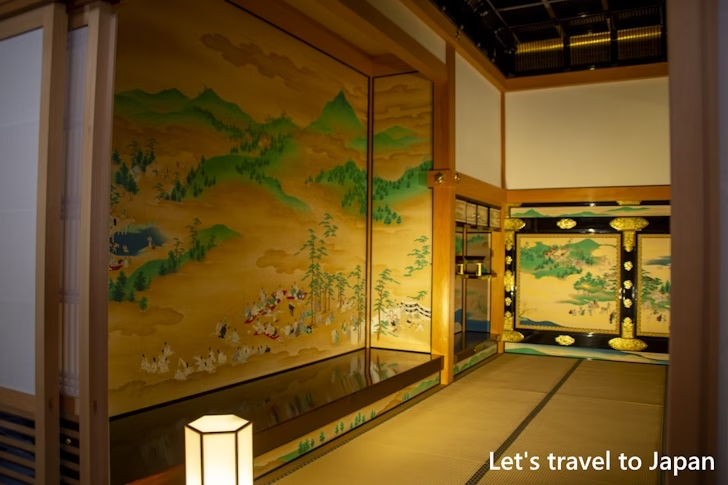
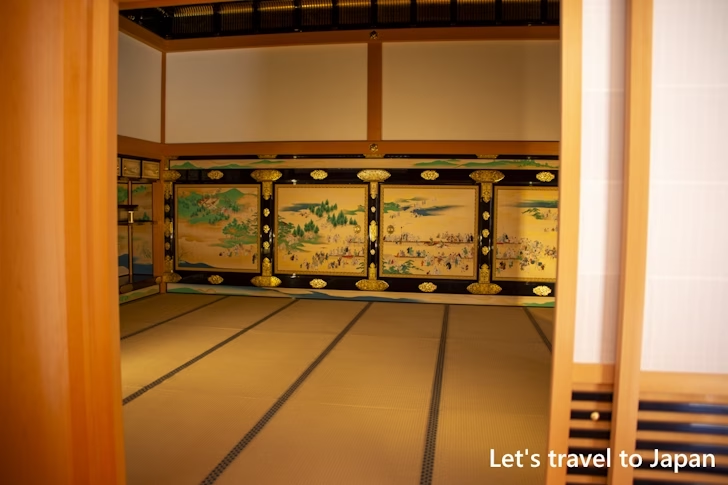
Saginoroka
The Saginorouka is a hallway connecting the Taimenjo and the Jorakuden. It was used by the shogun and feudal lord when heading to the Jorakuden.
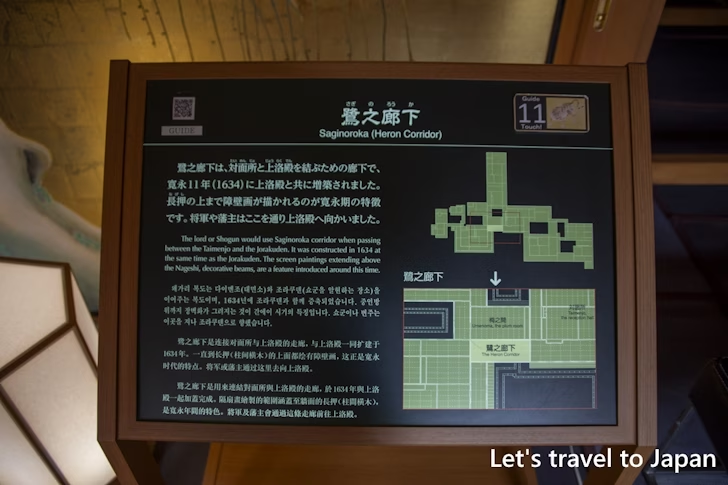
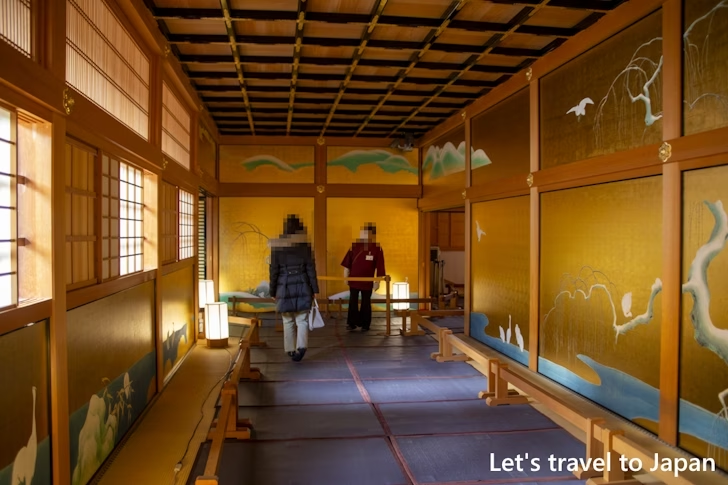
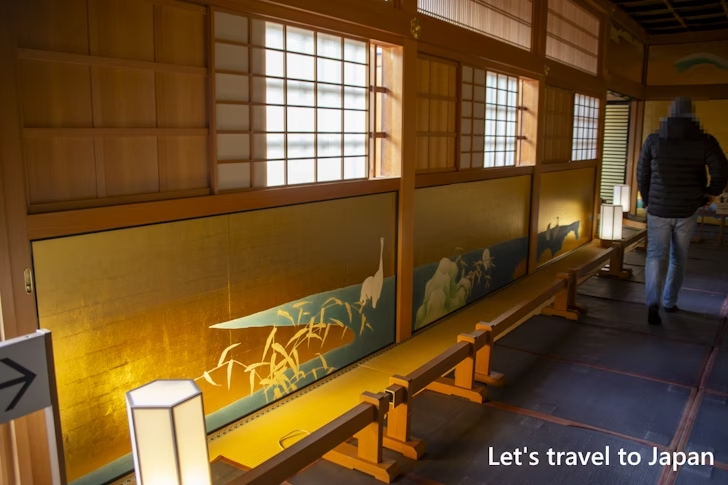
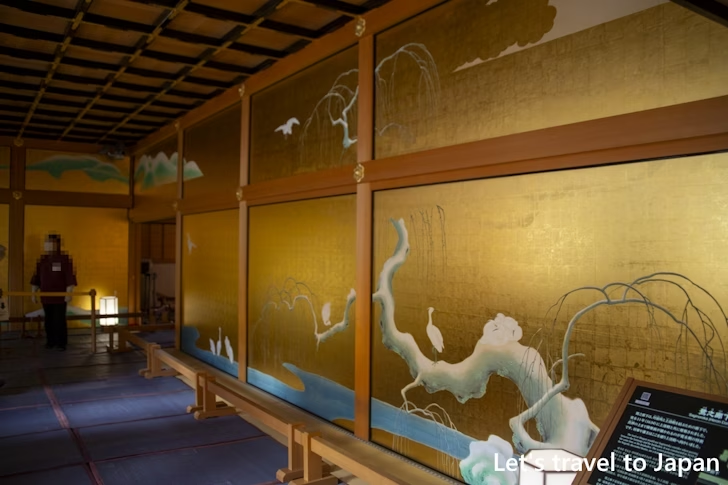
Jorakuden
The Jorakuden was expanded as a lodging for the third shogun, Iemitsu, during his visit to Kyoto. As a result, the Honmaru Palace became the Onari Goten, and the lord's residence moved to the Ninomaru Palace. It is the most prestigious building in the Honmaru Palace.
In the Jorakuden, you first proceed to the end of the corridor and then return along the same path. Therefore, it is often crowded.
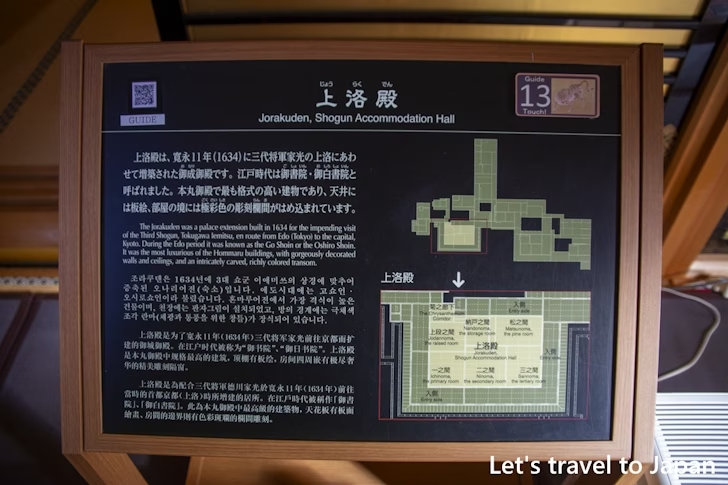
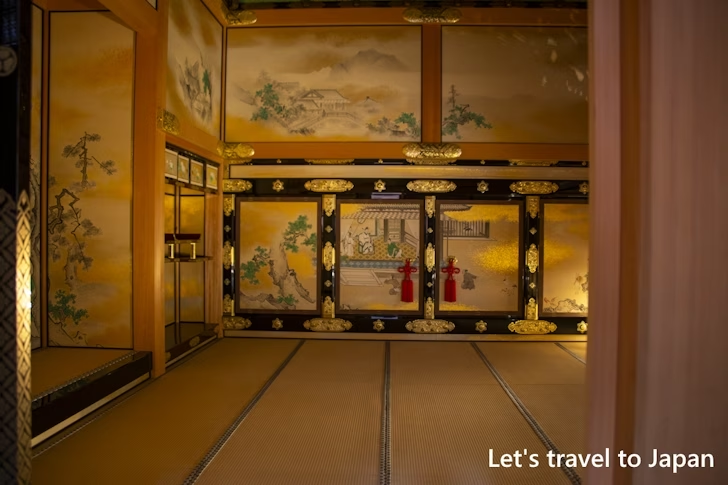
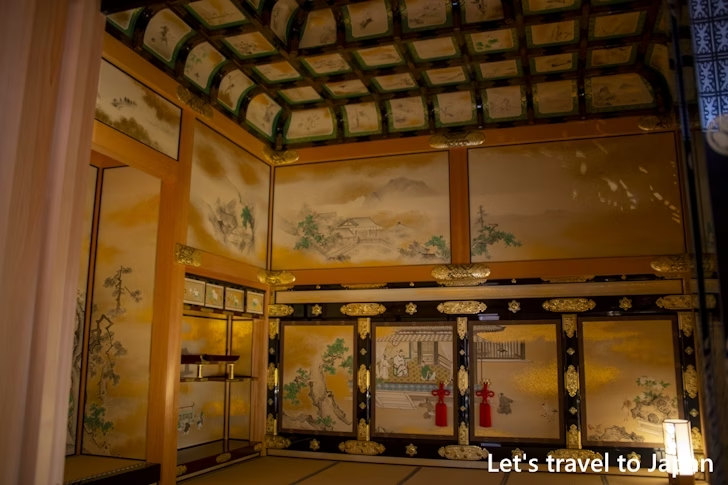
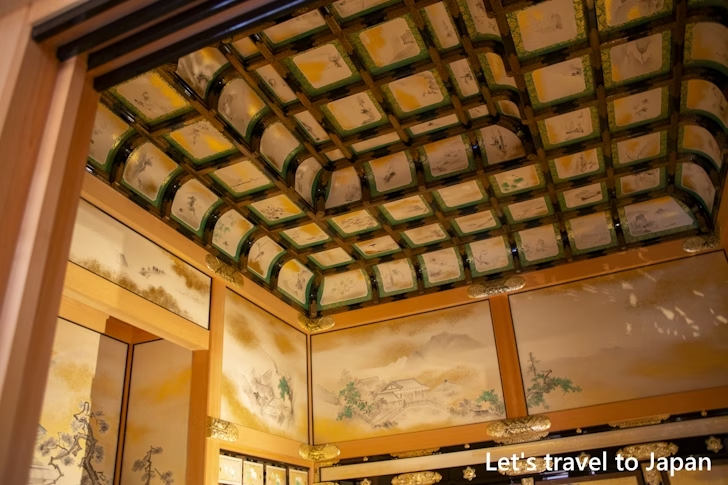
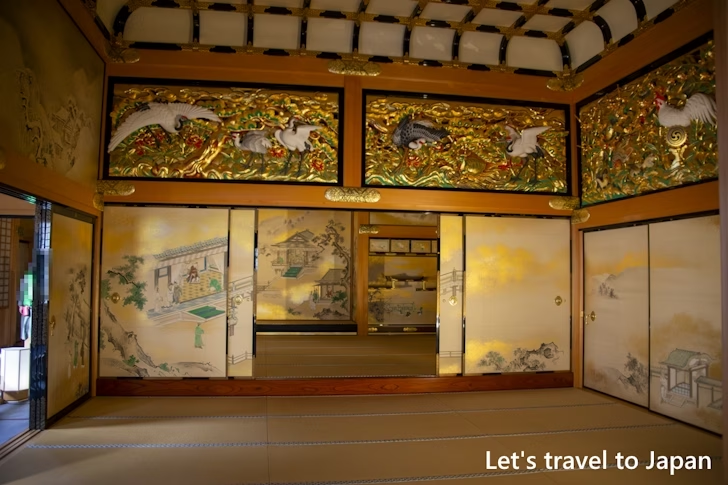
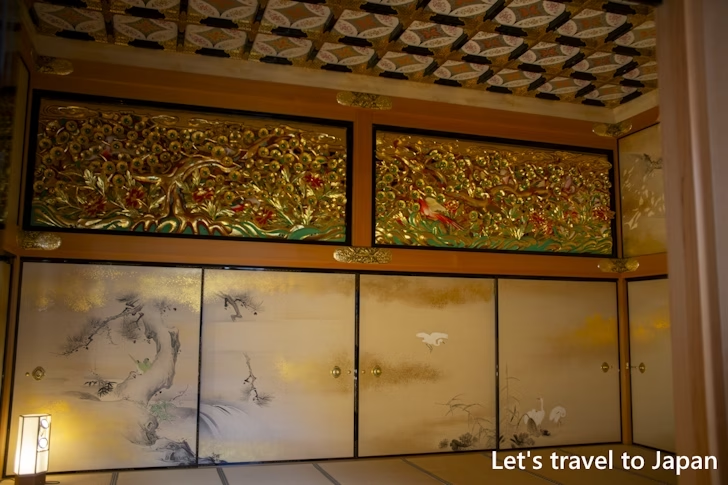
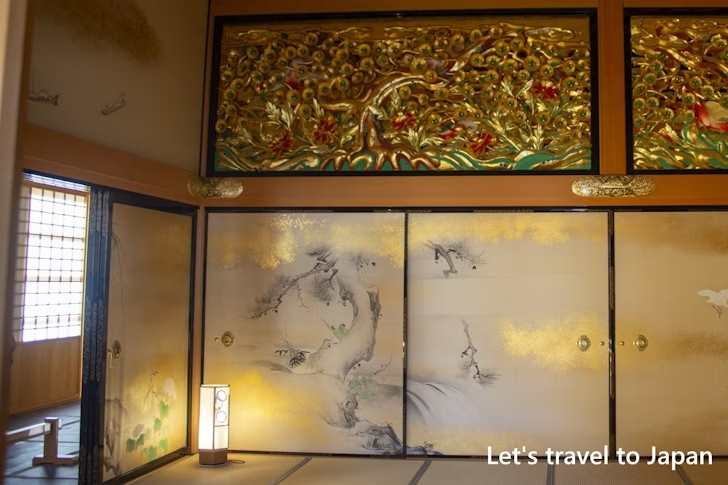
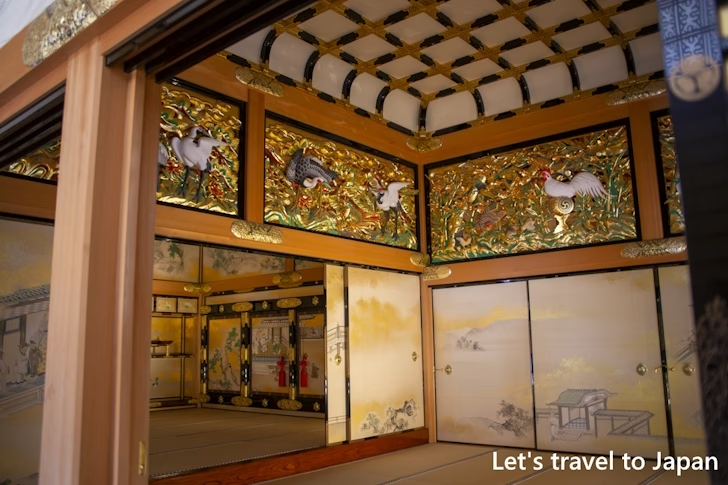
The corridor of the Jorakuden features extremely luxurious decorations.
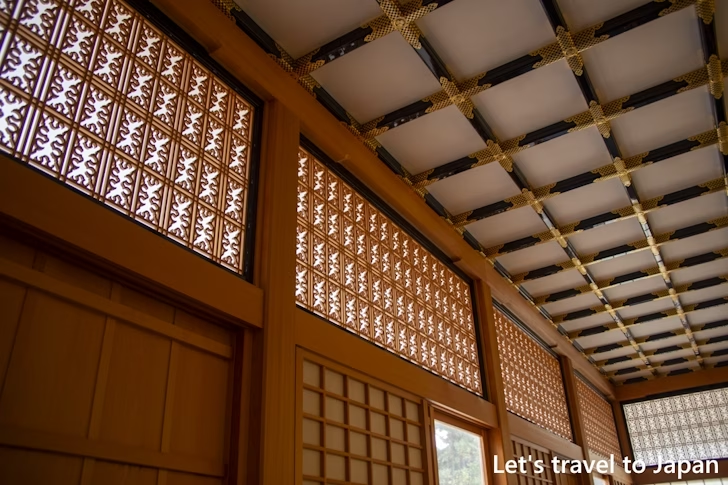
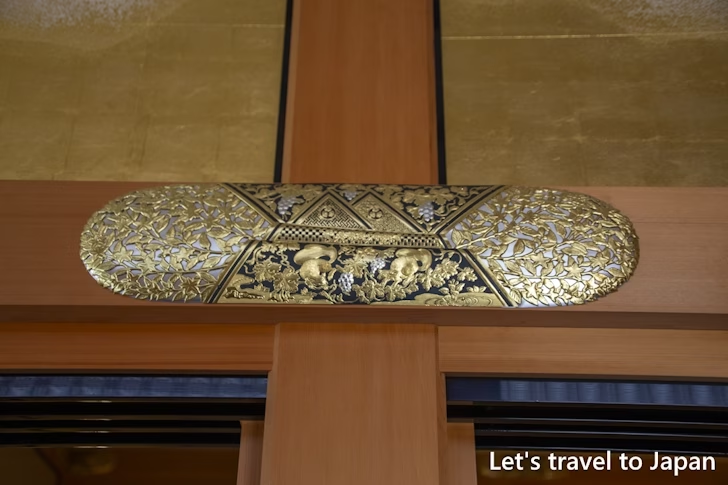
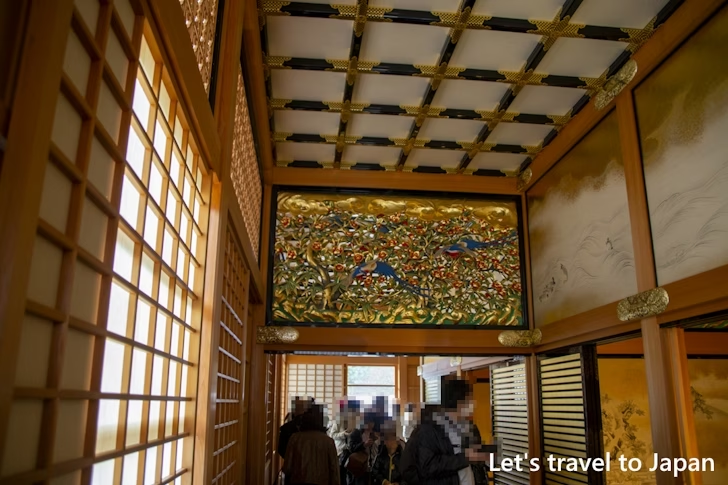
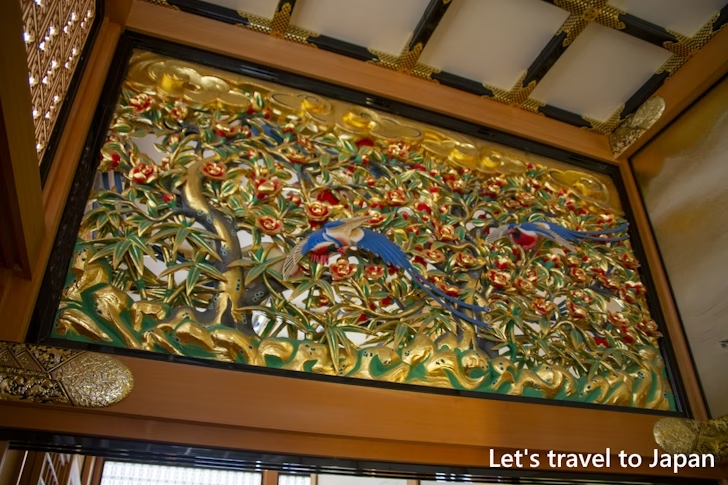
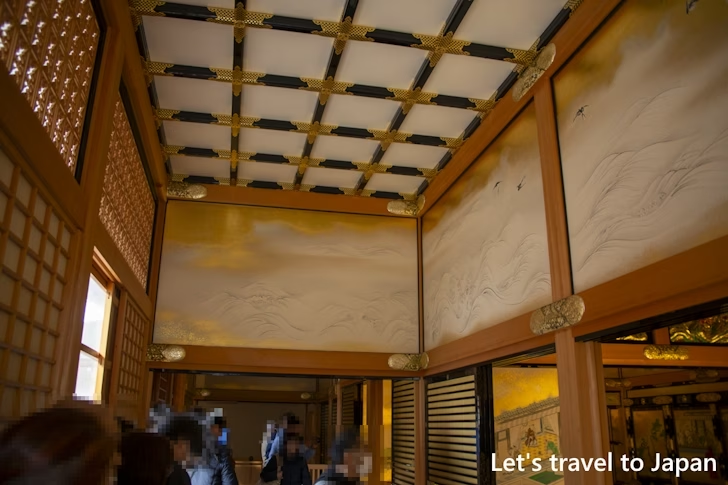
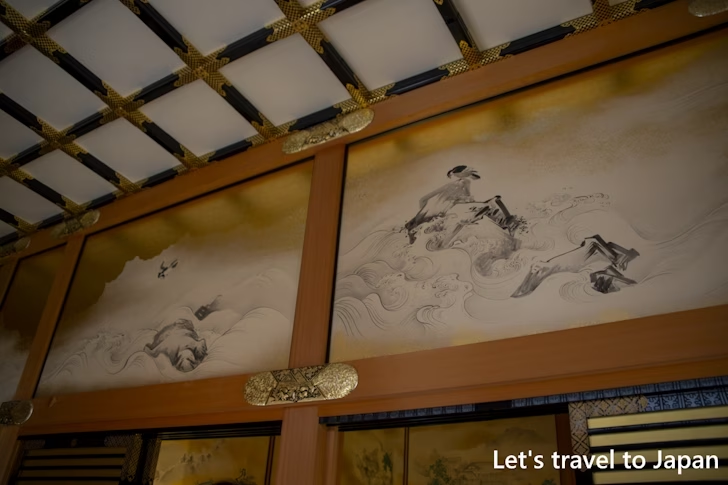
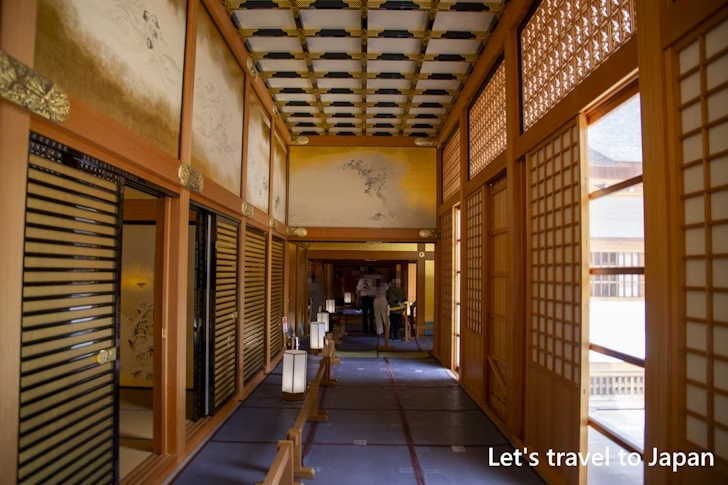
Umenoma
The Umenoma was used as a waiting room for senior retainers of the Owari Domain who were assigned the role of entertaining the shogun.
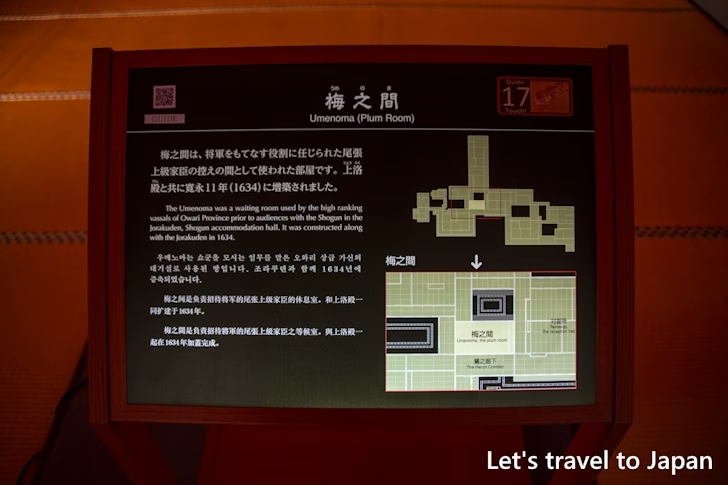
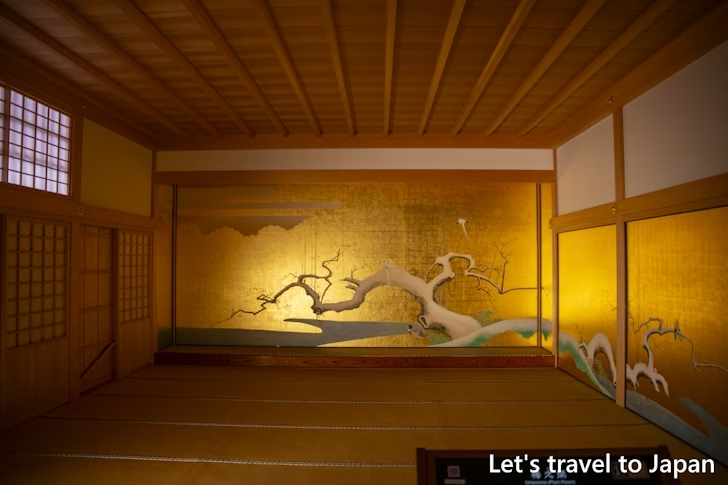
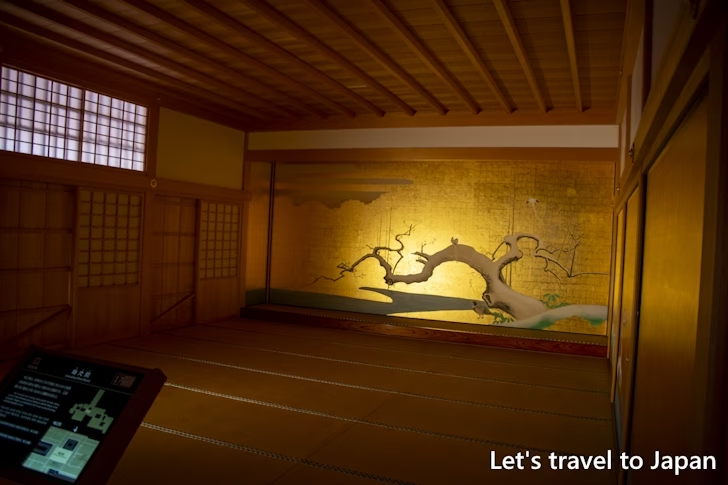
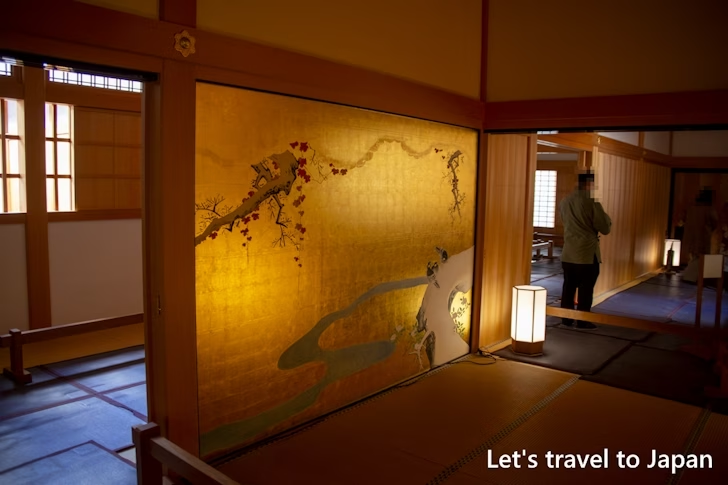
Kamigozensho
The Kamigozensho was used to reheat dishes cooked in the Upper Kitchen. The area with an iroriused for heating is called the Gozenba, and it is flanked by rooms named Kaminoma and Onjoudan. It was primarily used for preparing meals for the Jorakuden.
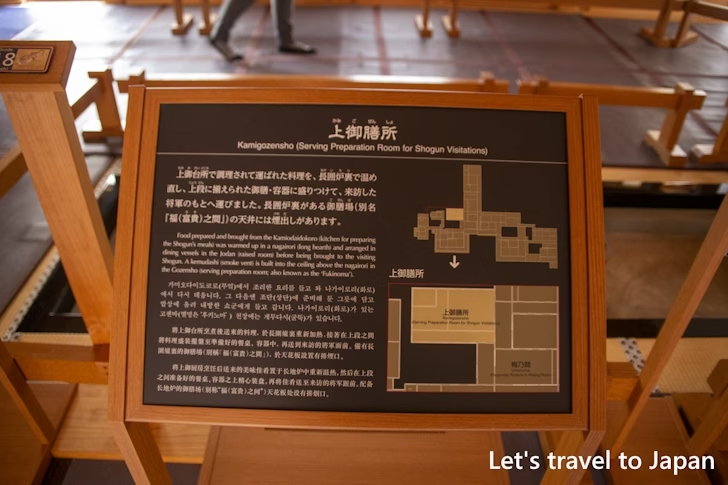
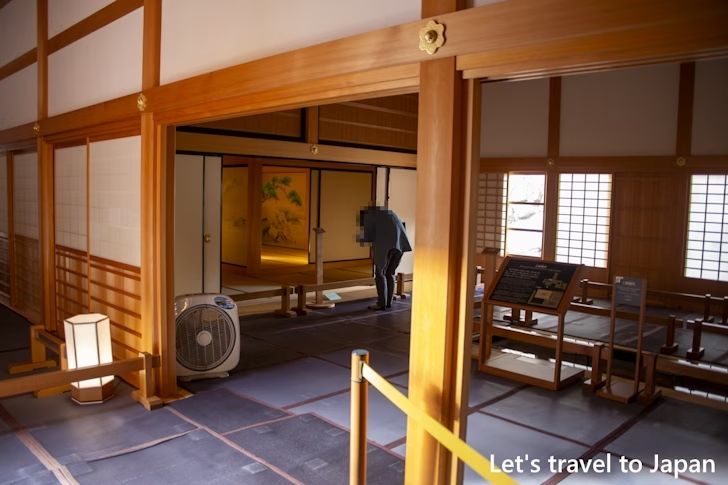
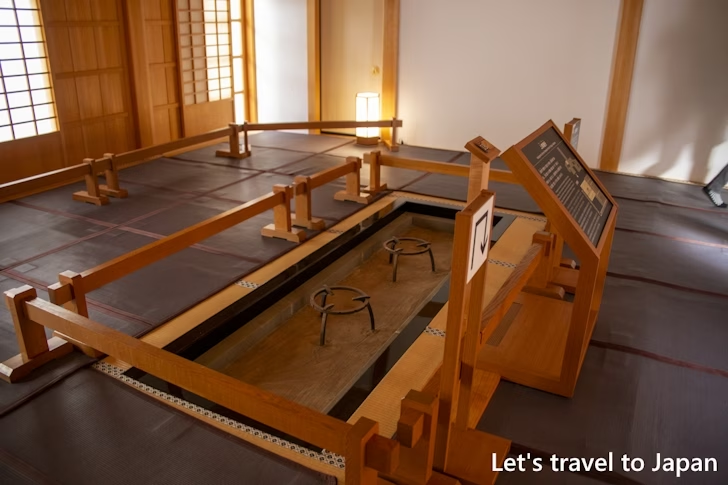
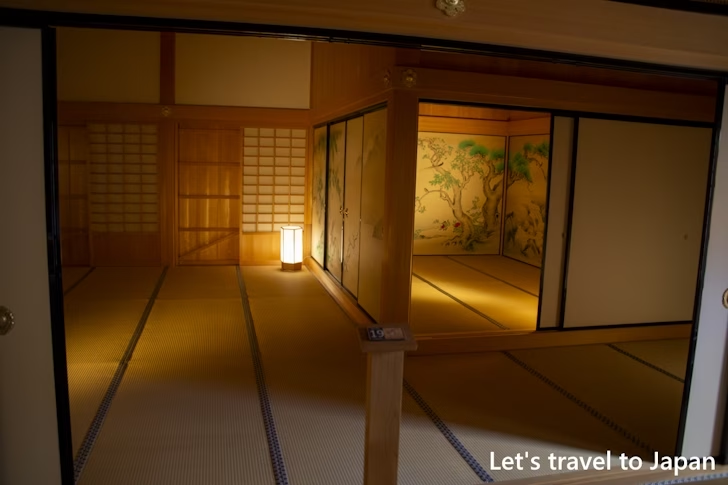
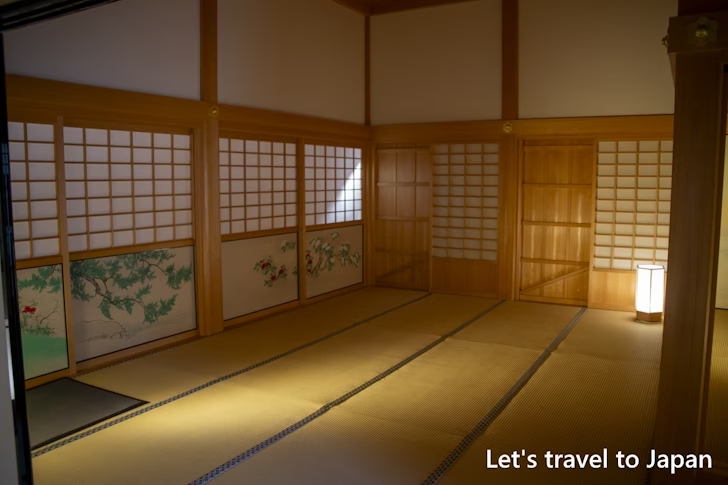
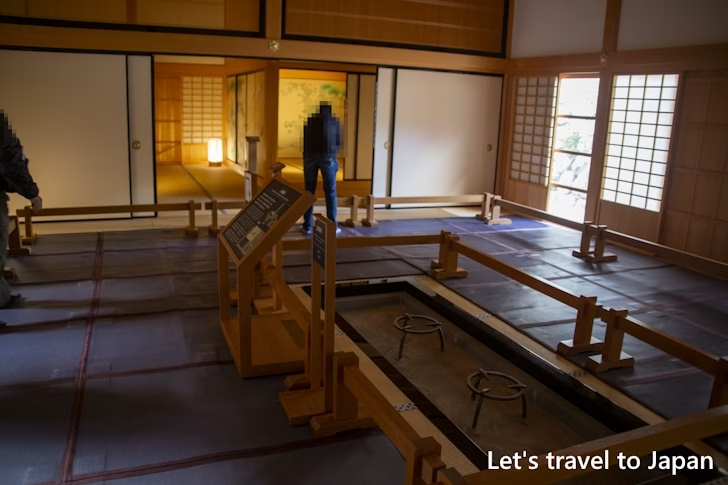
Shimogozensho
From the Kamigozensho, if you proceed past the Nando Ichi-no-ma and Nando Ni-no-ma of the Taimenjo, you will reach the Shimogozensho. Similar to the Kamigozensho, the Shimogozensho was also used for reheating food. It was utilized for preparing meals for the feudal lord and retainers.
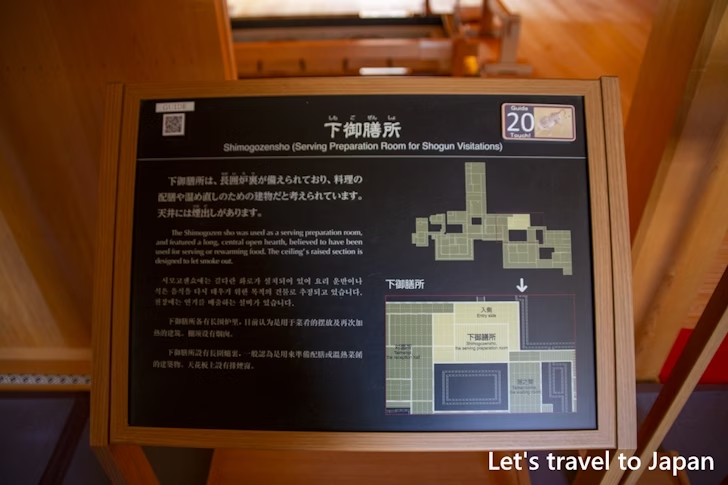
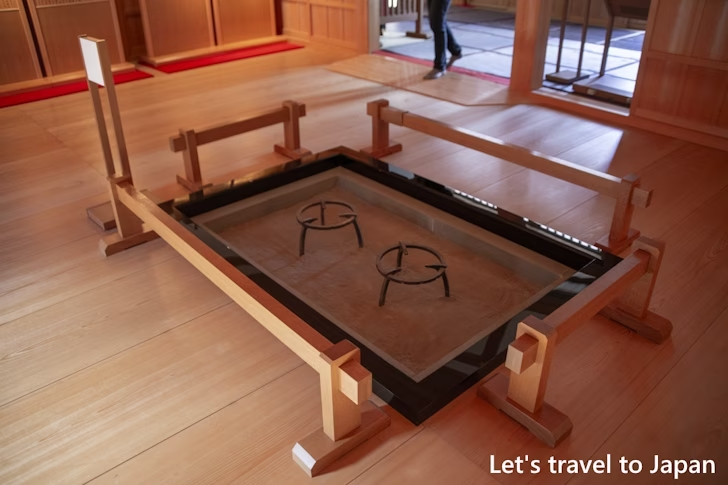
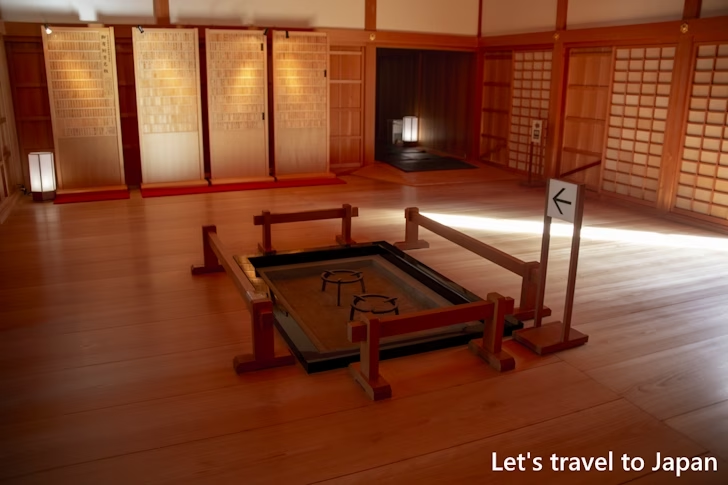
The structure allows smoke from the ceiling to be vented outside.
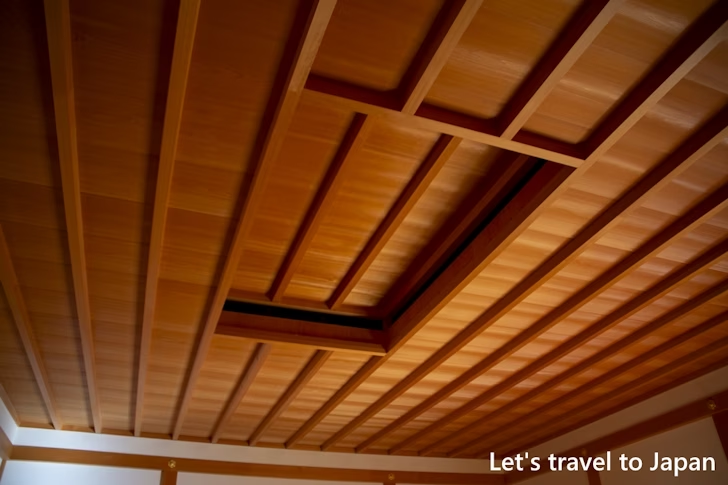
Yudono Shoin
Next, we enter through the Yudono Shoin front entrance. The first room is the Yudono Shoin. The Yudono Shoin was a bathhouse exclusively for the shogun, consisting of three rooms used as changing and resting areas.
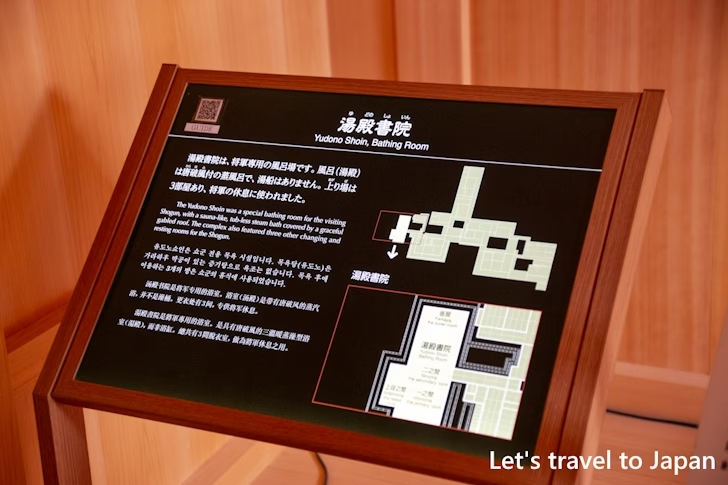
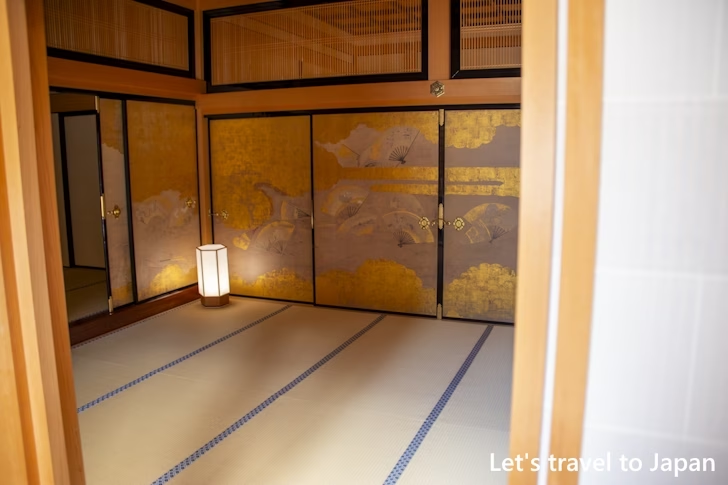
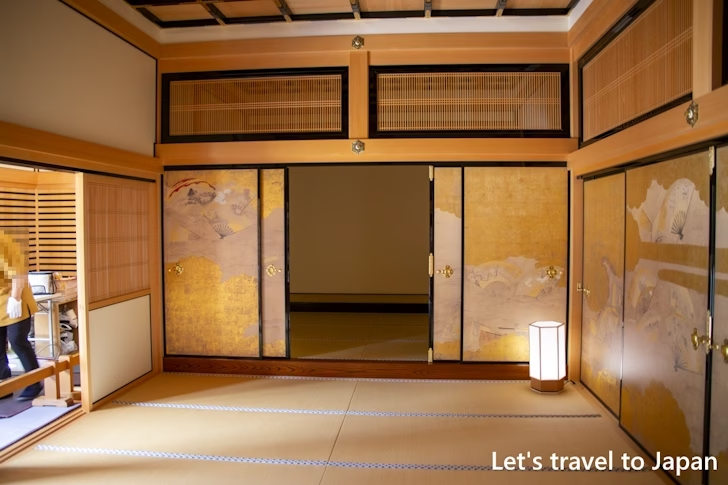
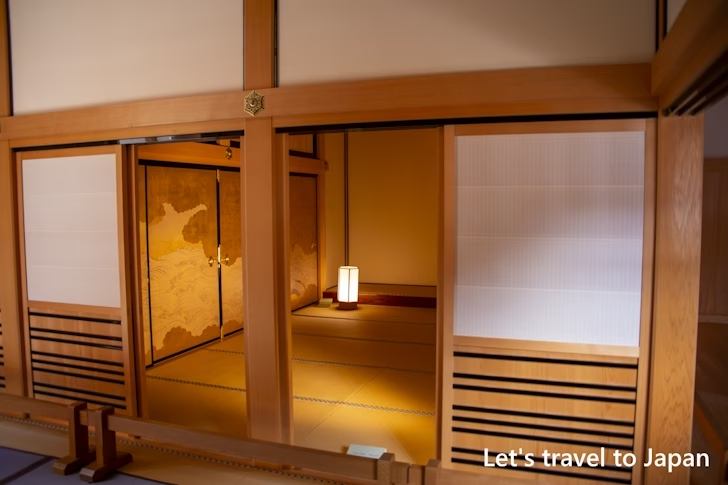
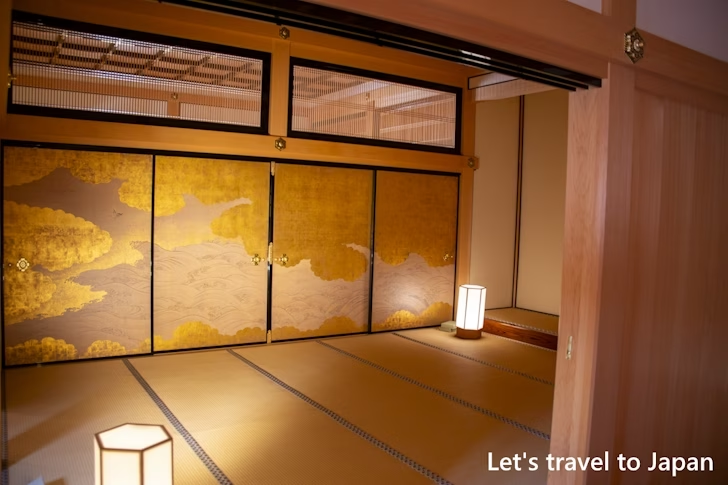
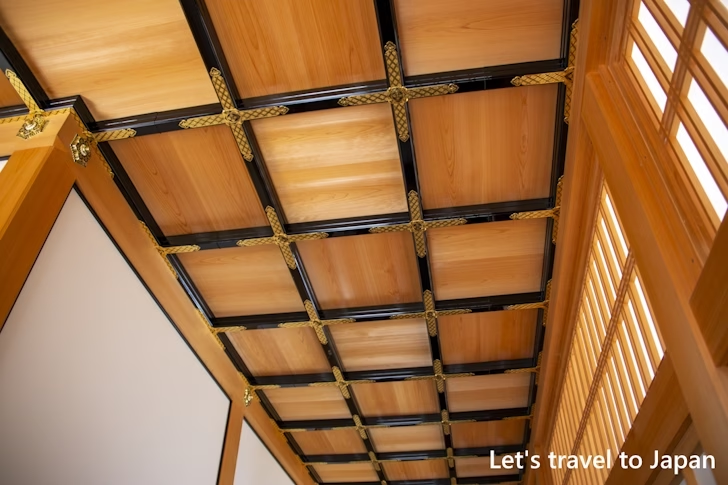
There was no bathtub in the bathhouse; instead, a steam bath was installed. It seems that it used steam from water boiled in a kamado in a structure called 'Furoyakata'.
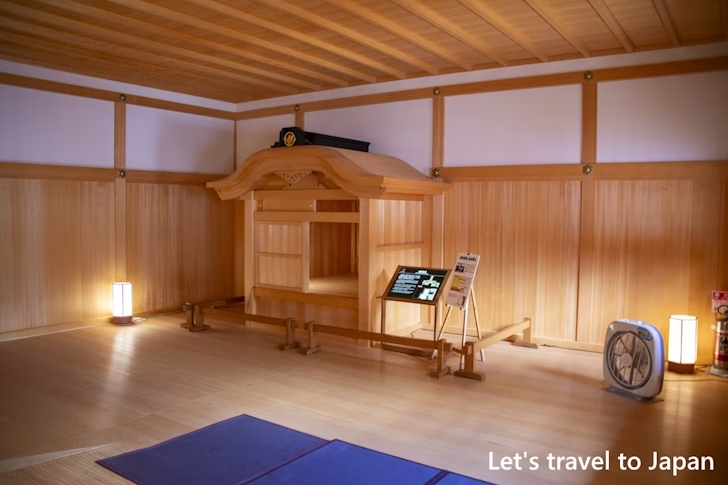
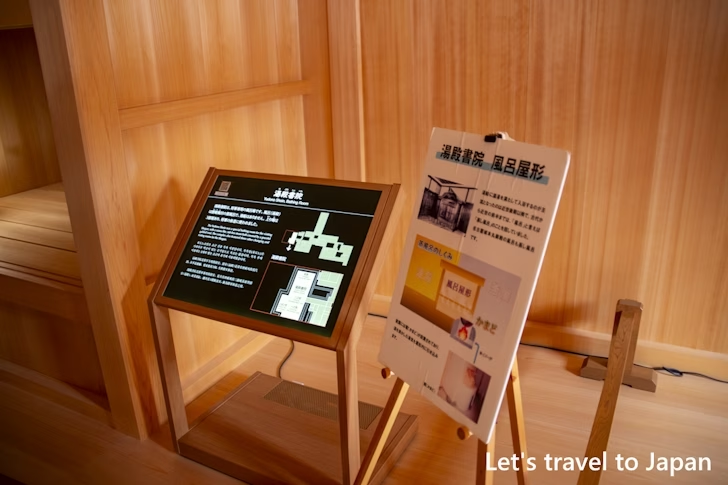
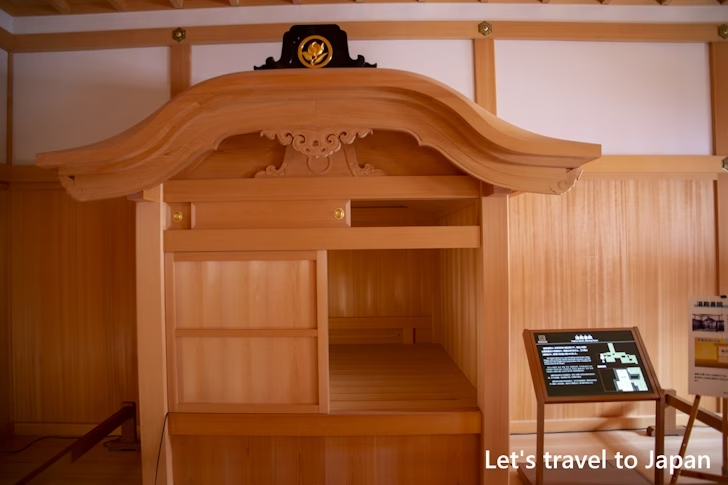
Kuroki Shoin
The Kuroki Shoin is the smallest building in the Honmaru Palace. According to one theory, it is said to be the relocated lodging of Tokugawa Ieyasu from Kiyosu Castle. Unlike other rooms in the Honmaru Palace that use cypress wood, the Kuroki Shoin is characterized by the use of pine wood.
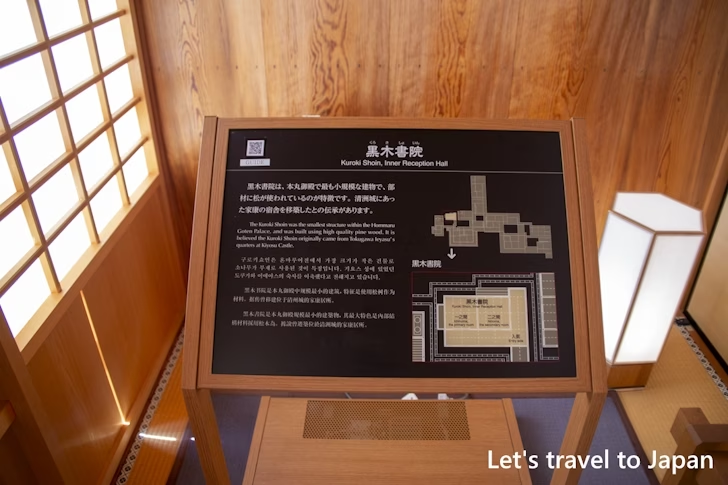
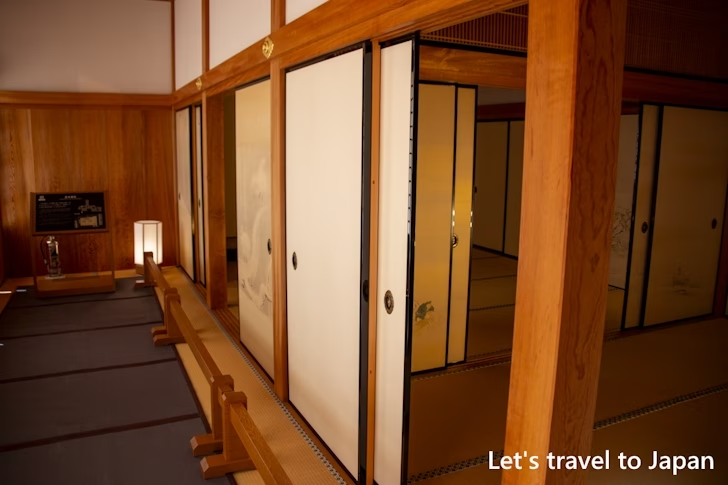
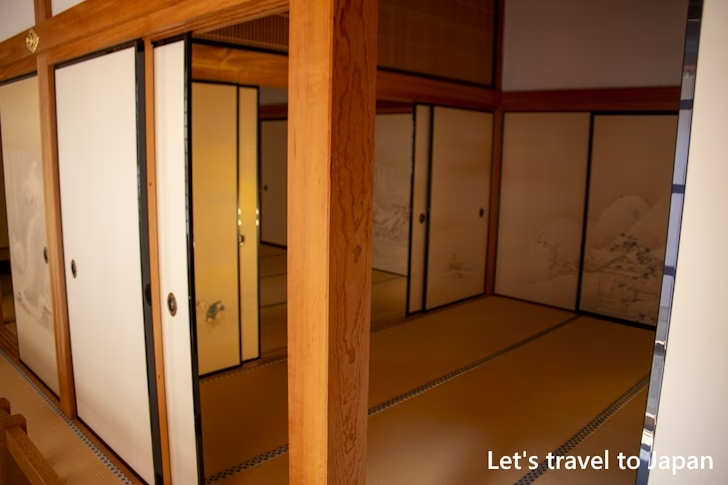
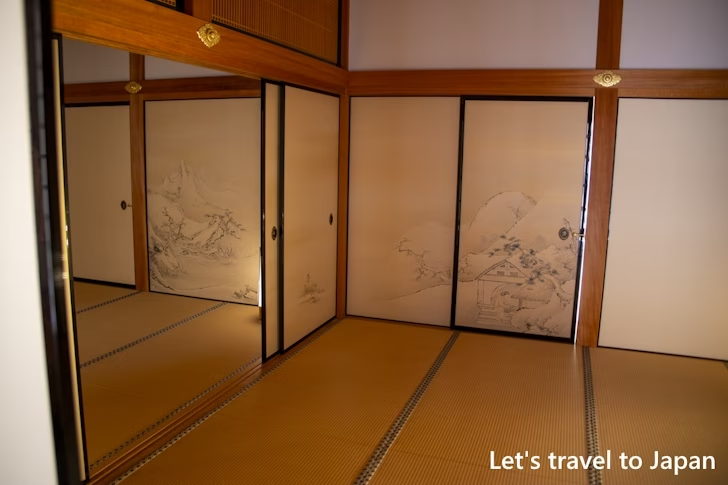
List of photos related to Nagoya Castle Honmaru Palace
Please see below for a list of photos related to Nagoya Castle Honmaru Palace.
-- --
Thank you for reading to the end.
( Written by Tatsuo Ikura )